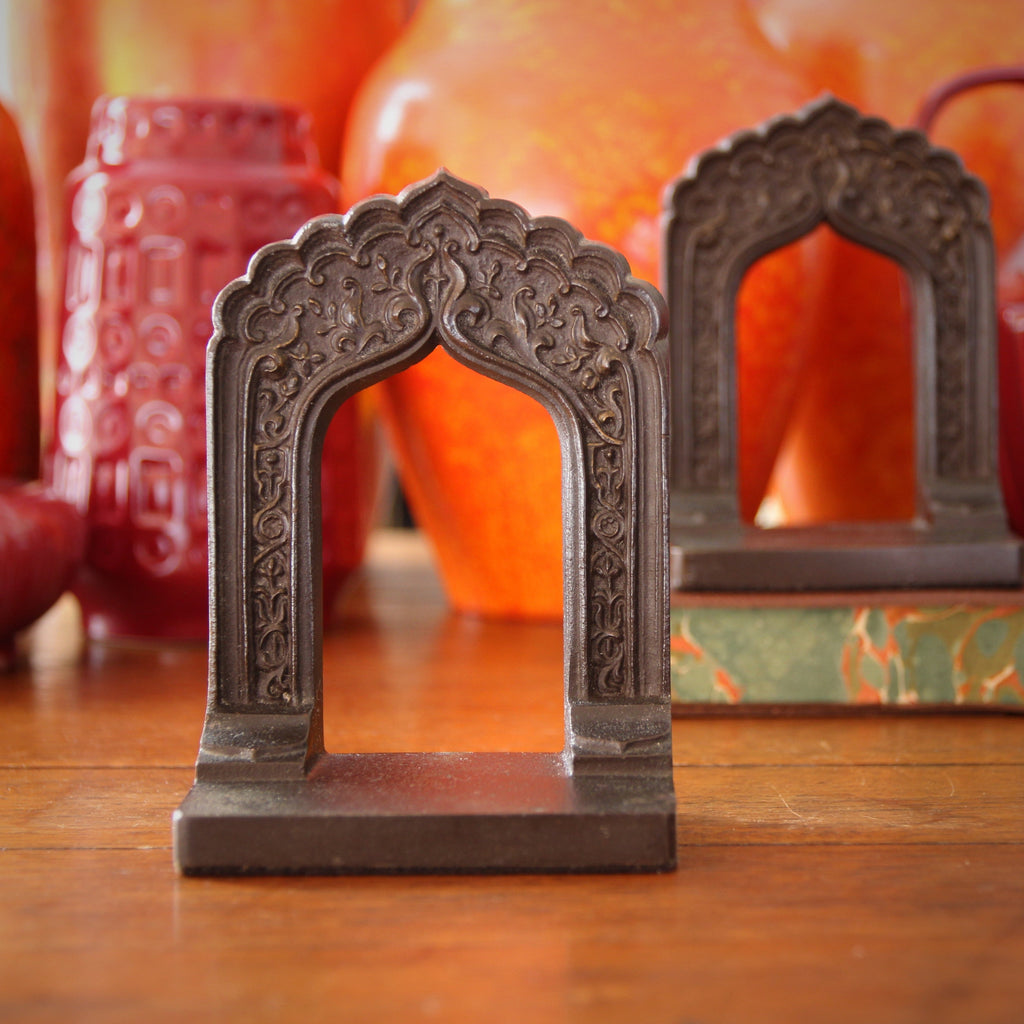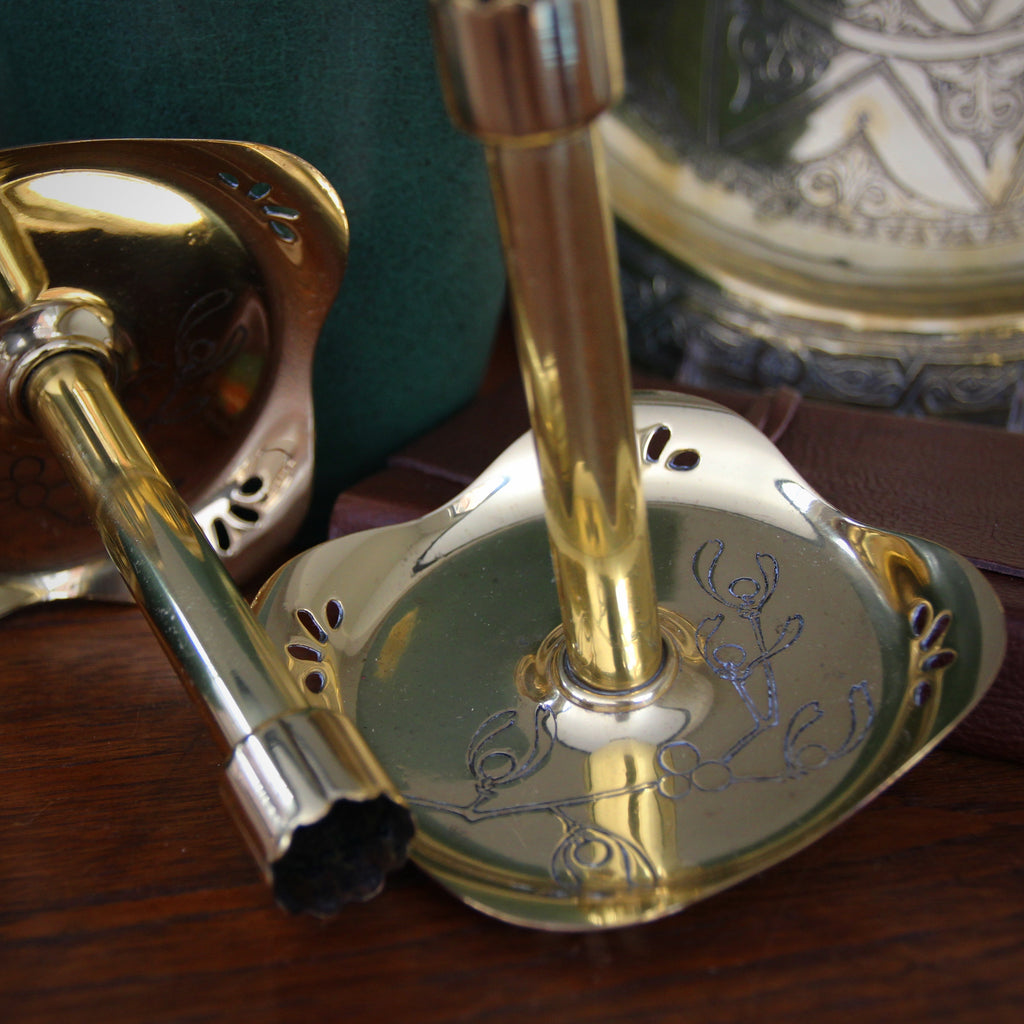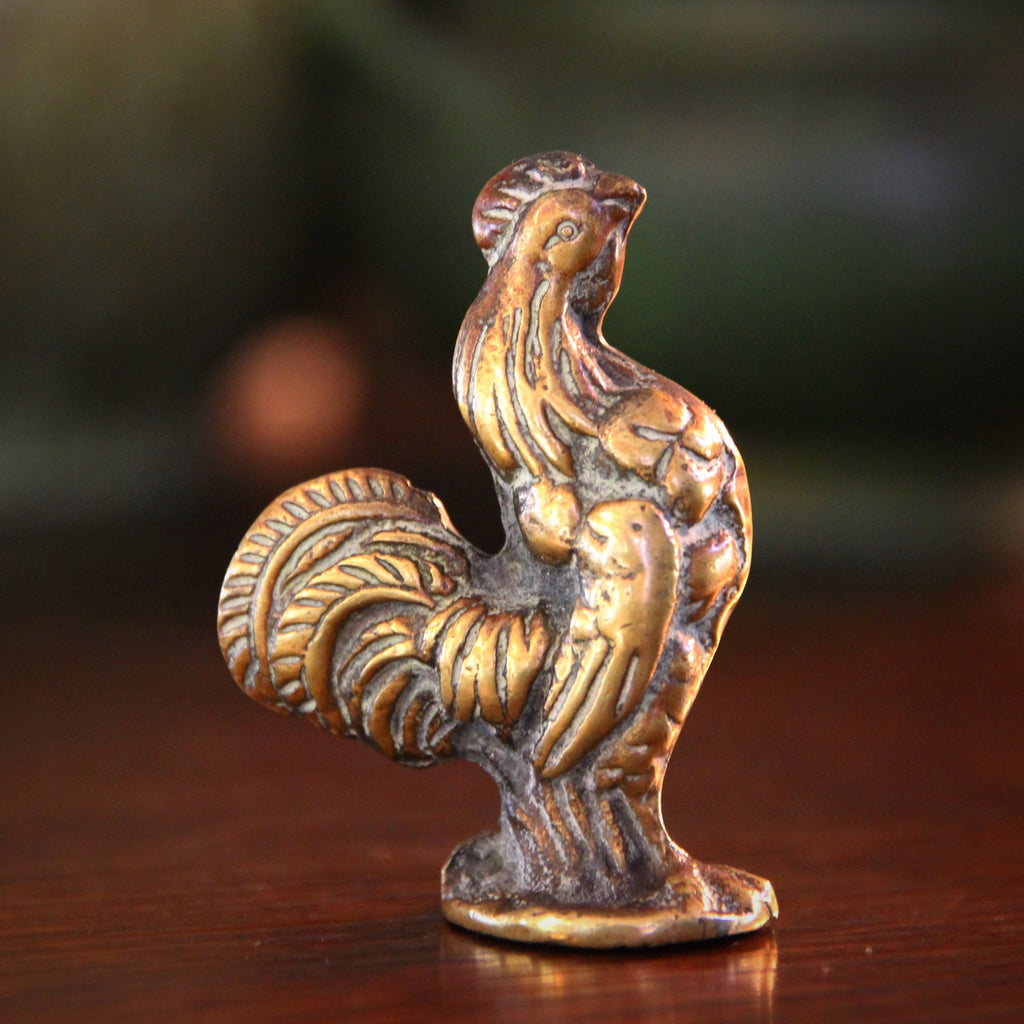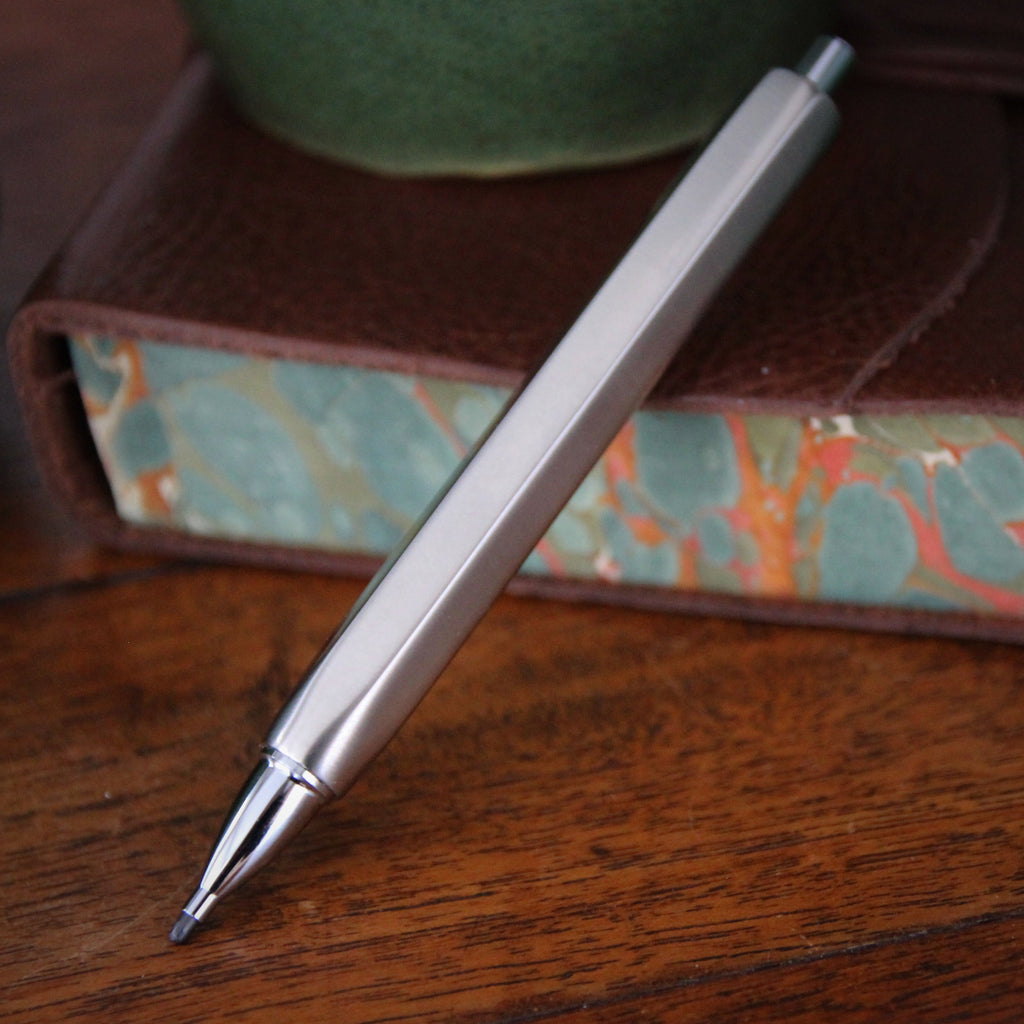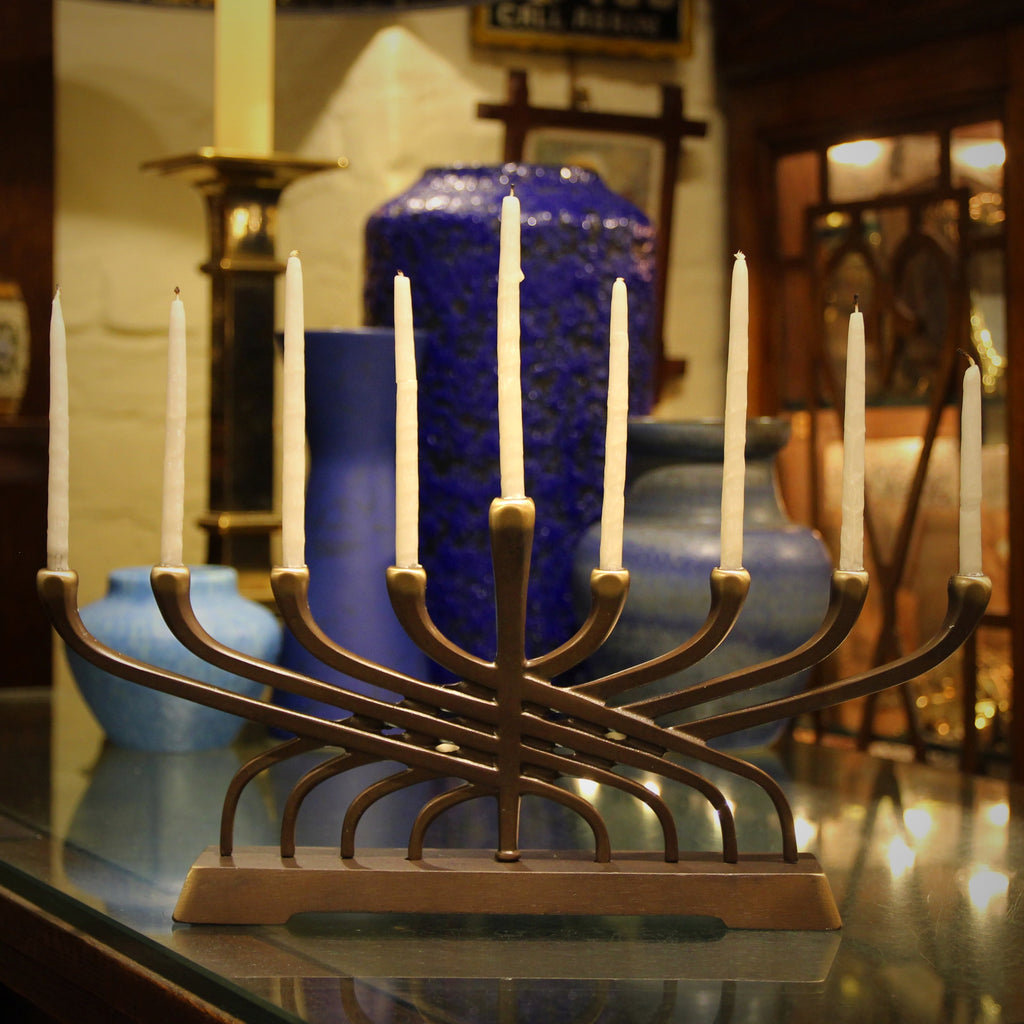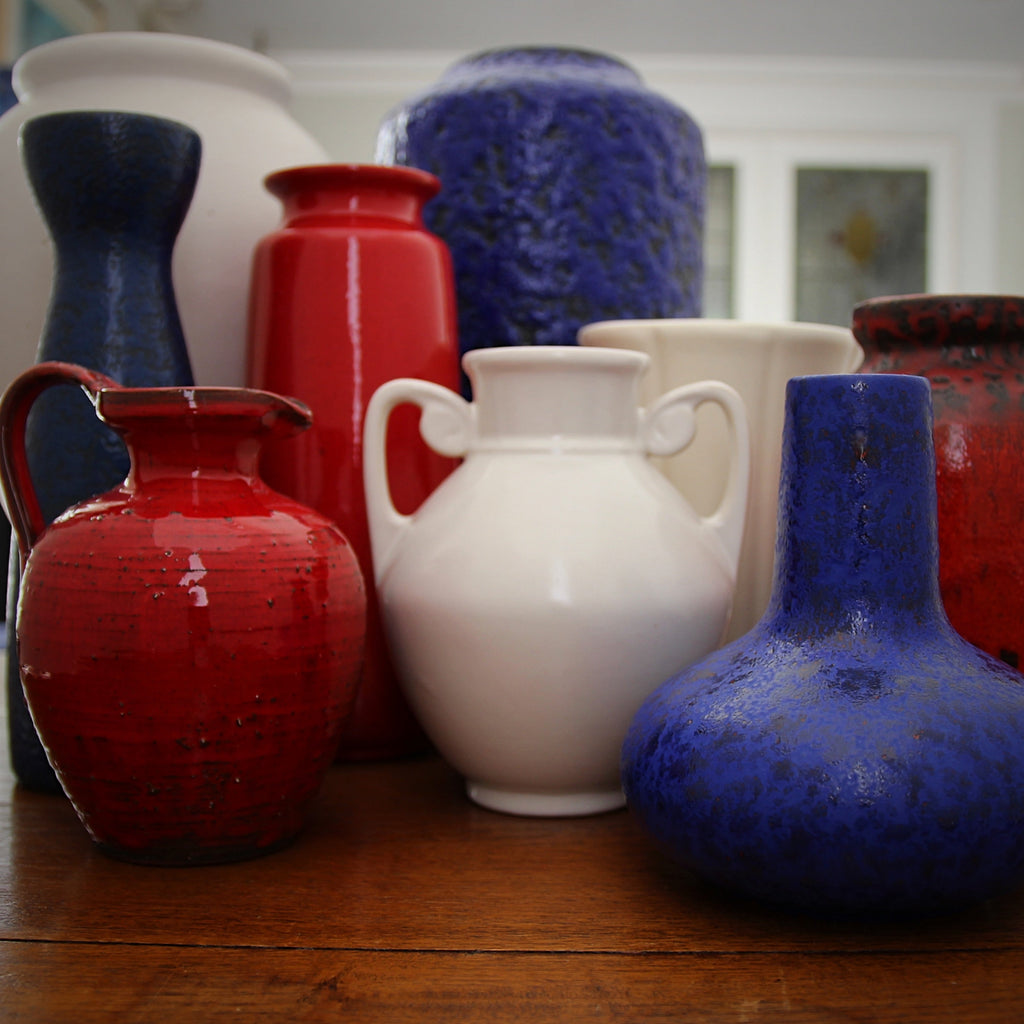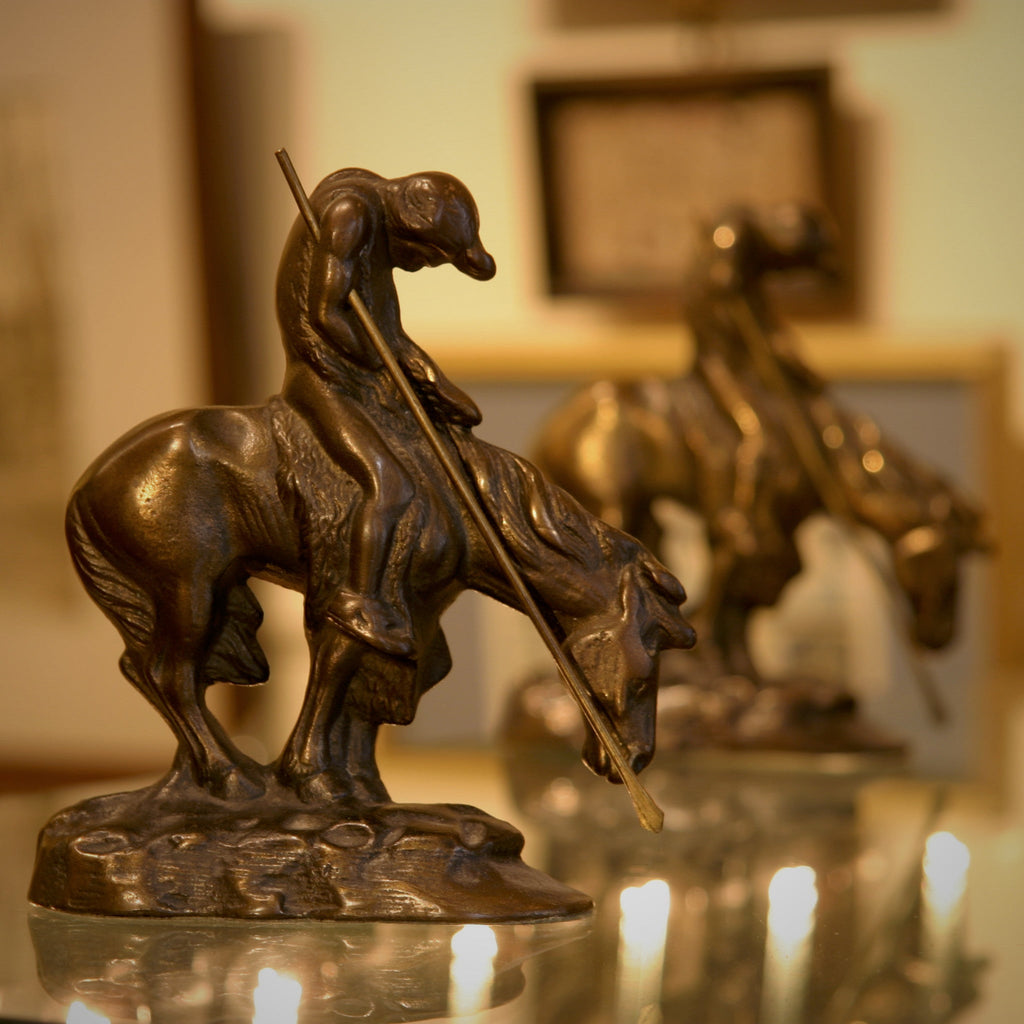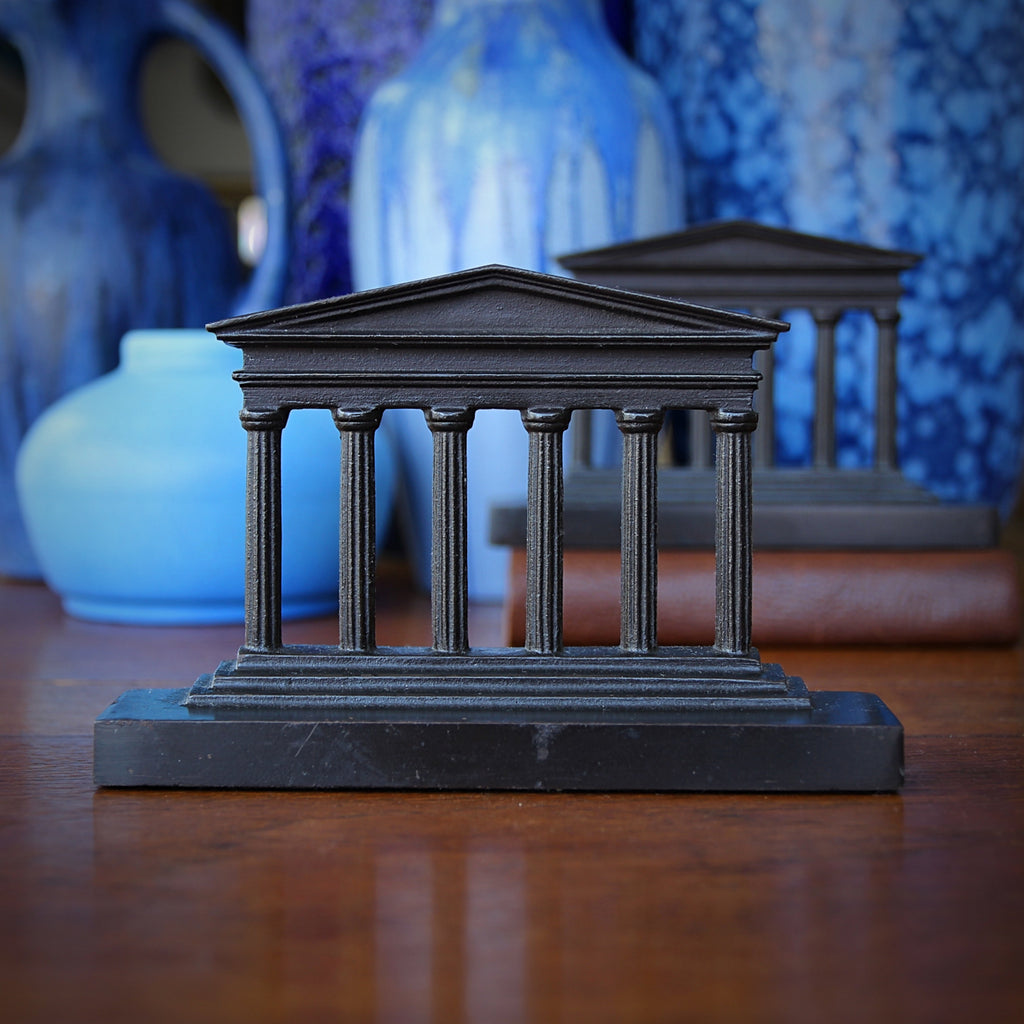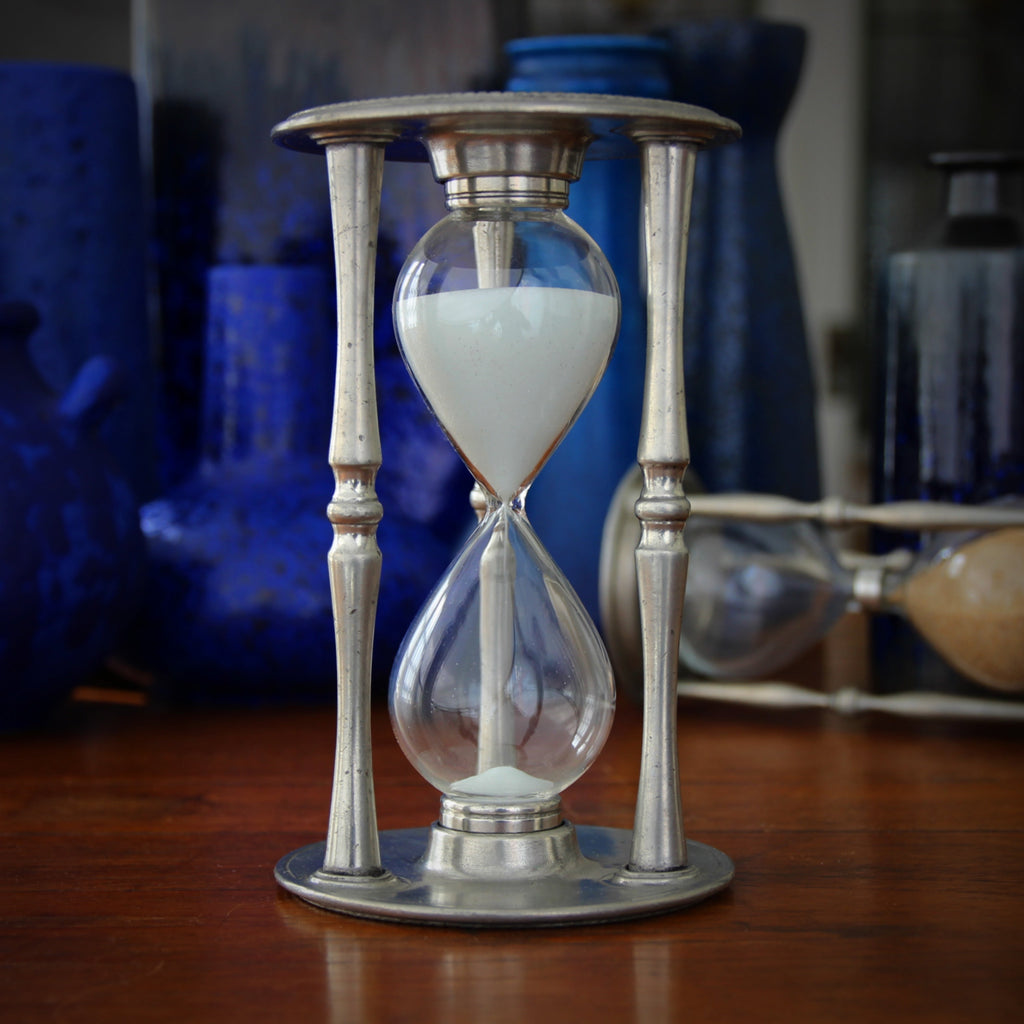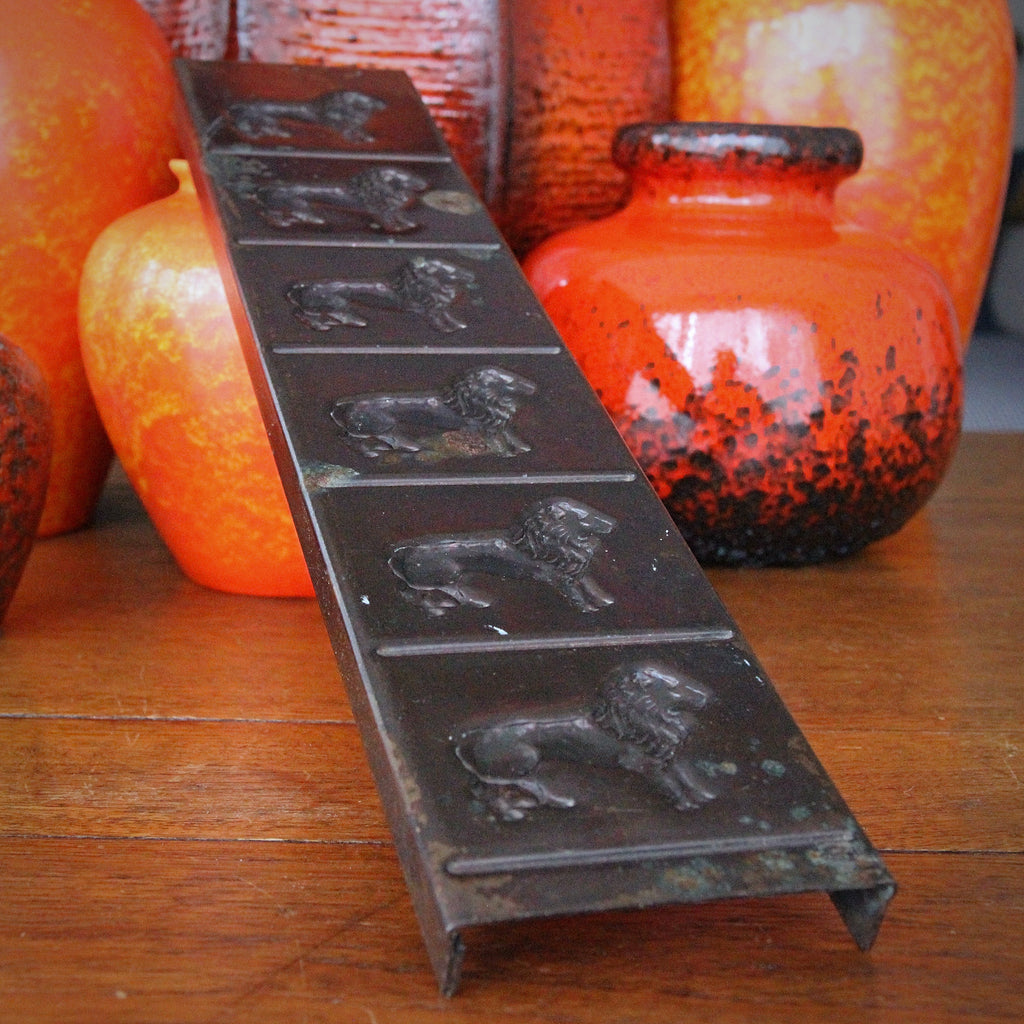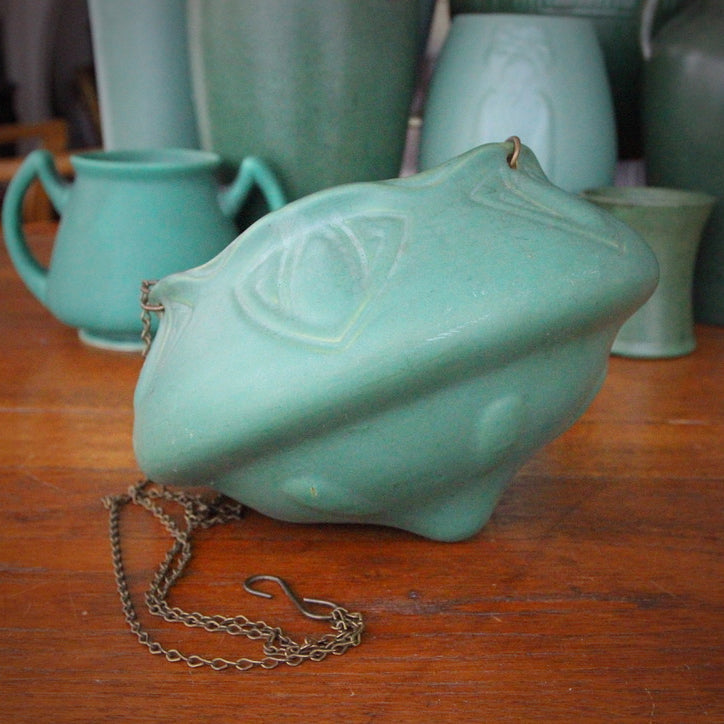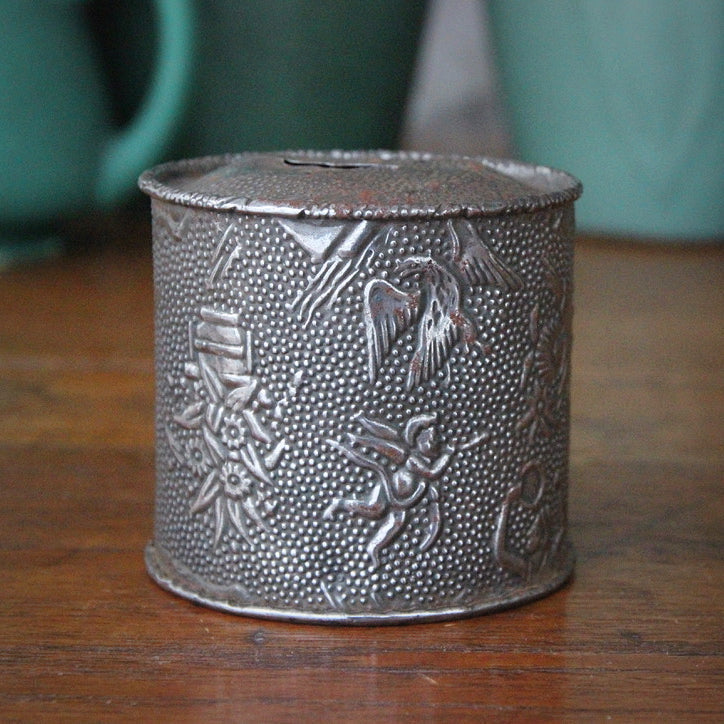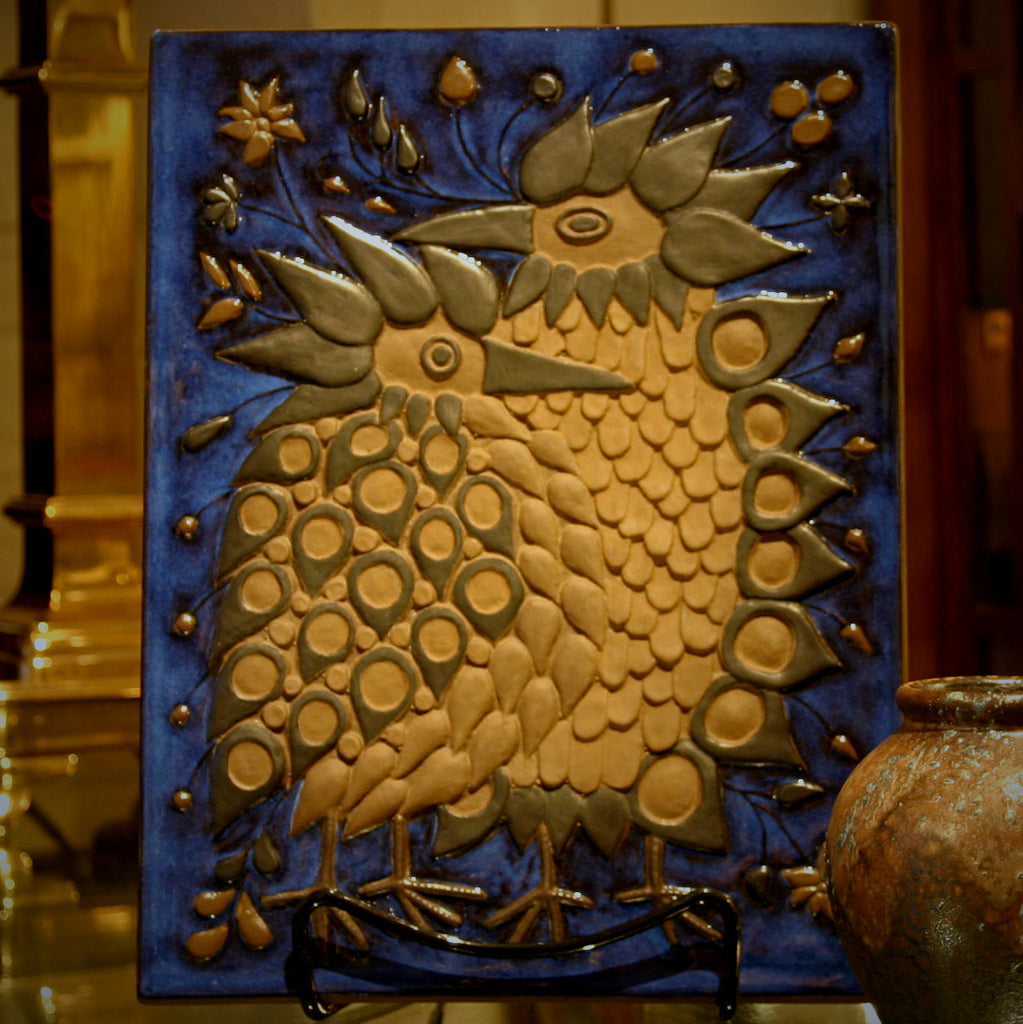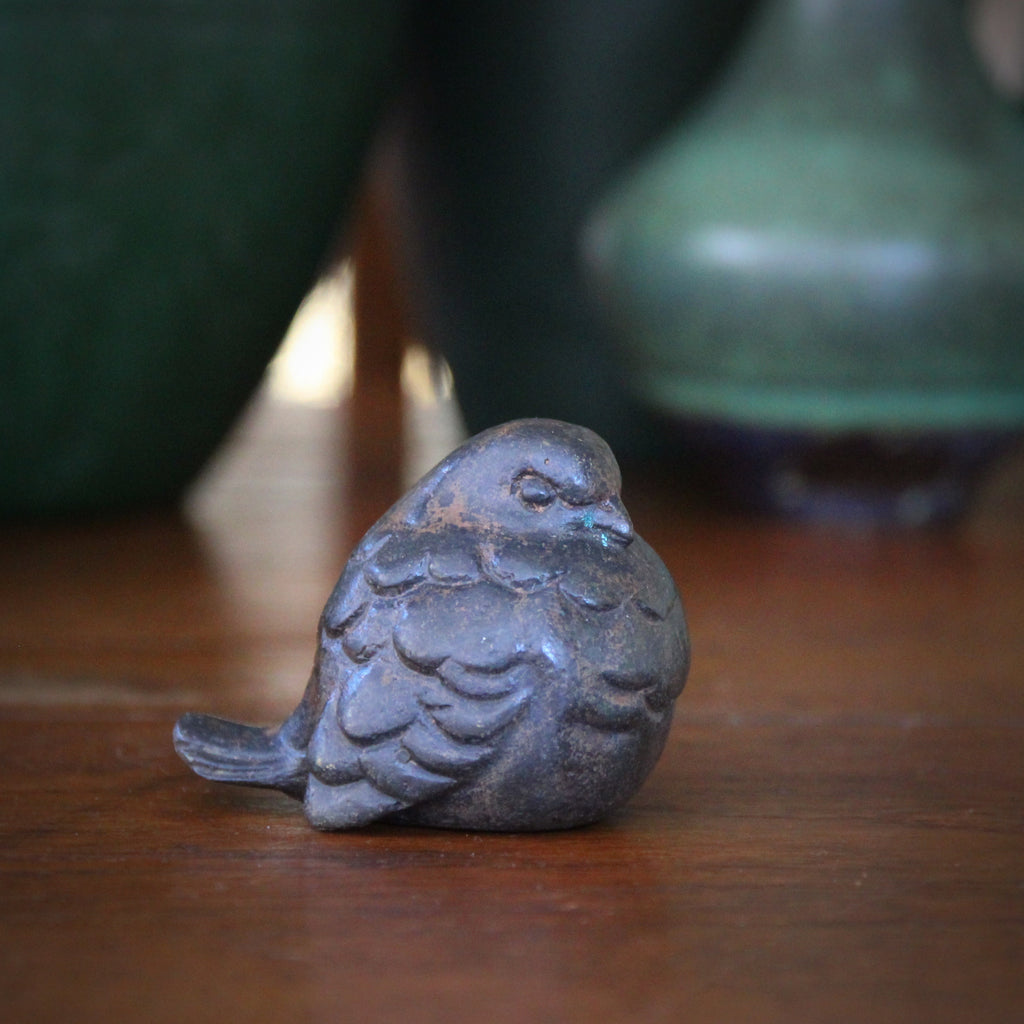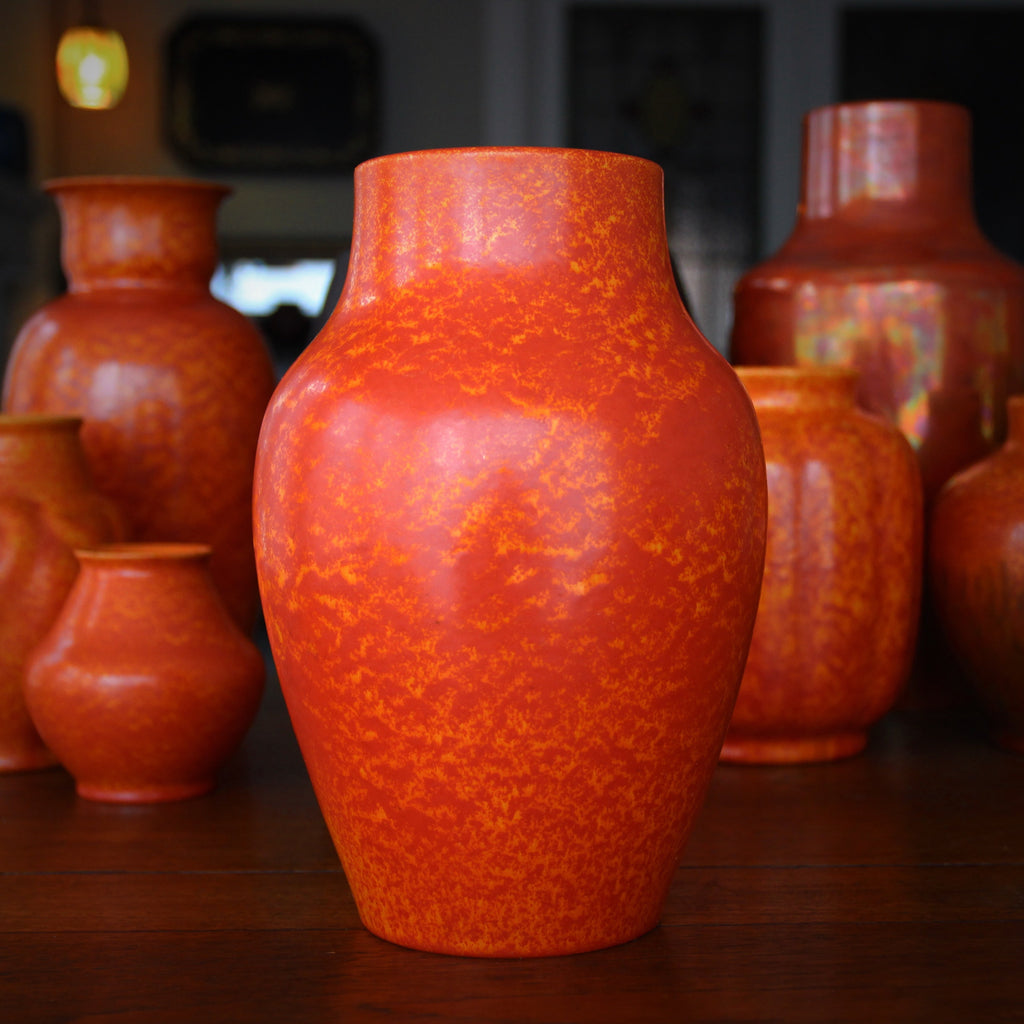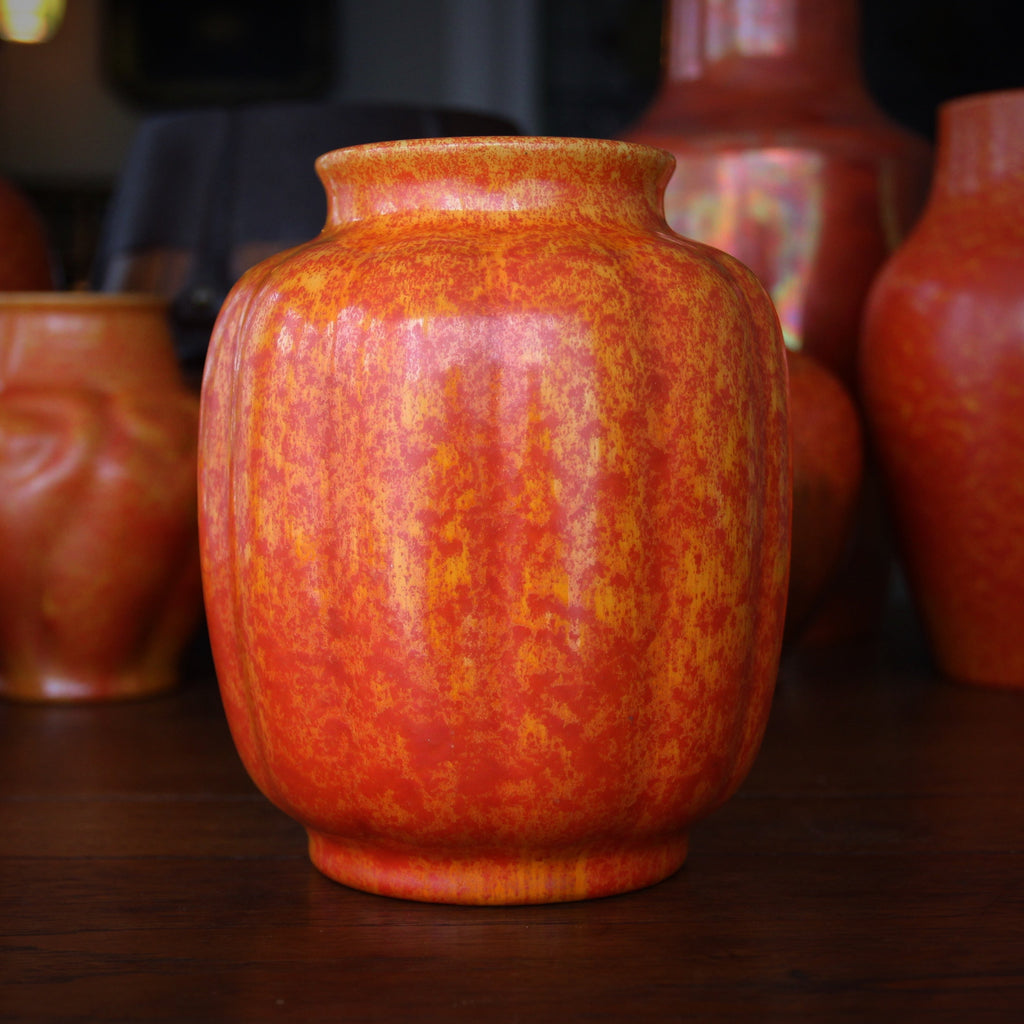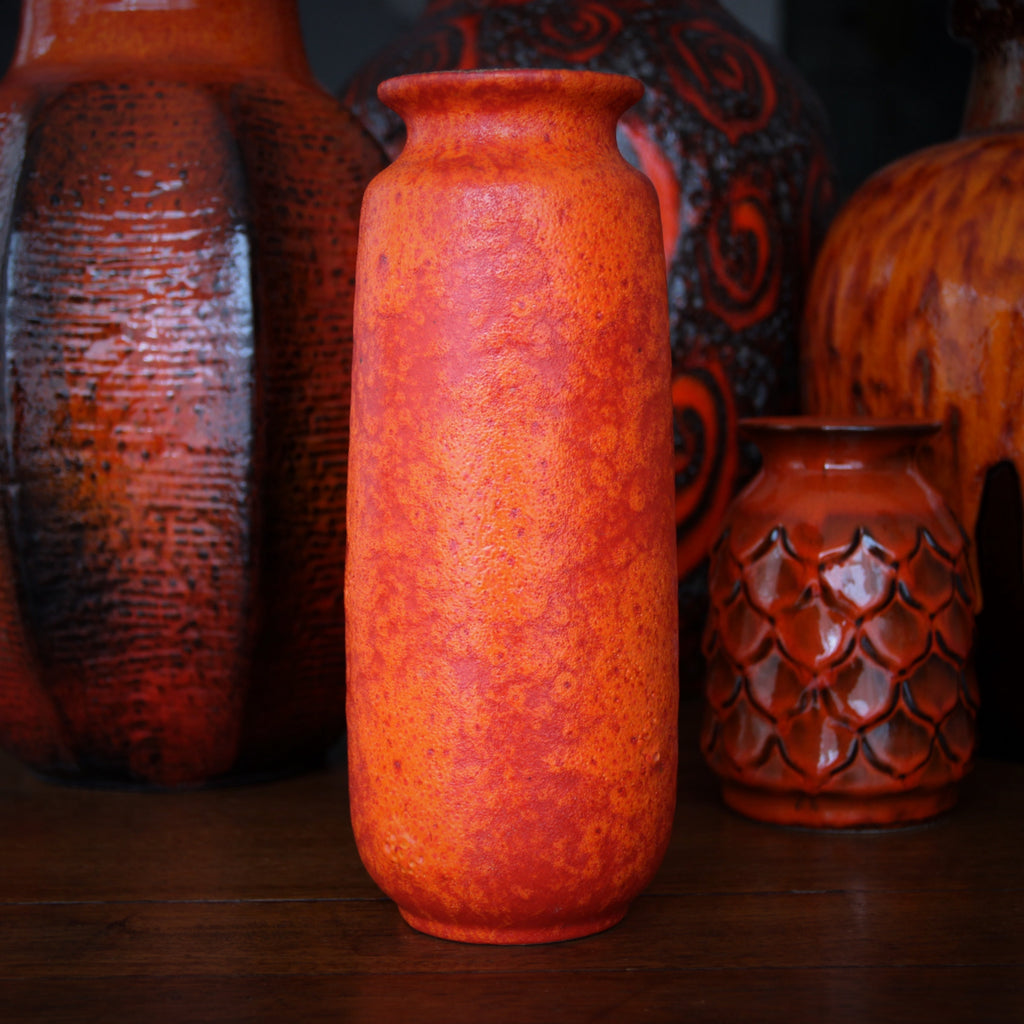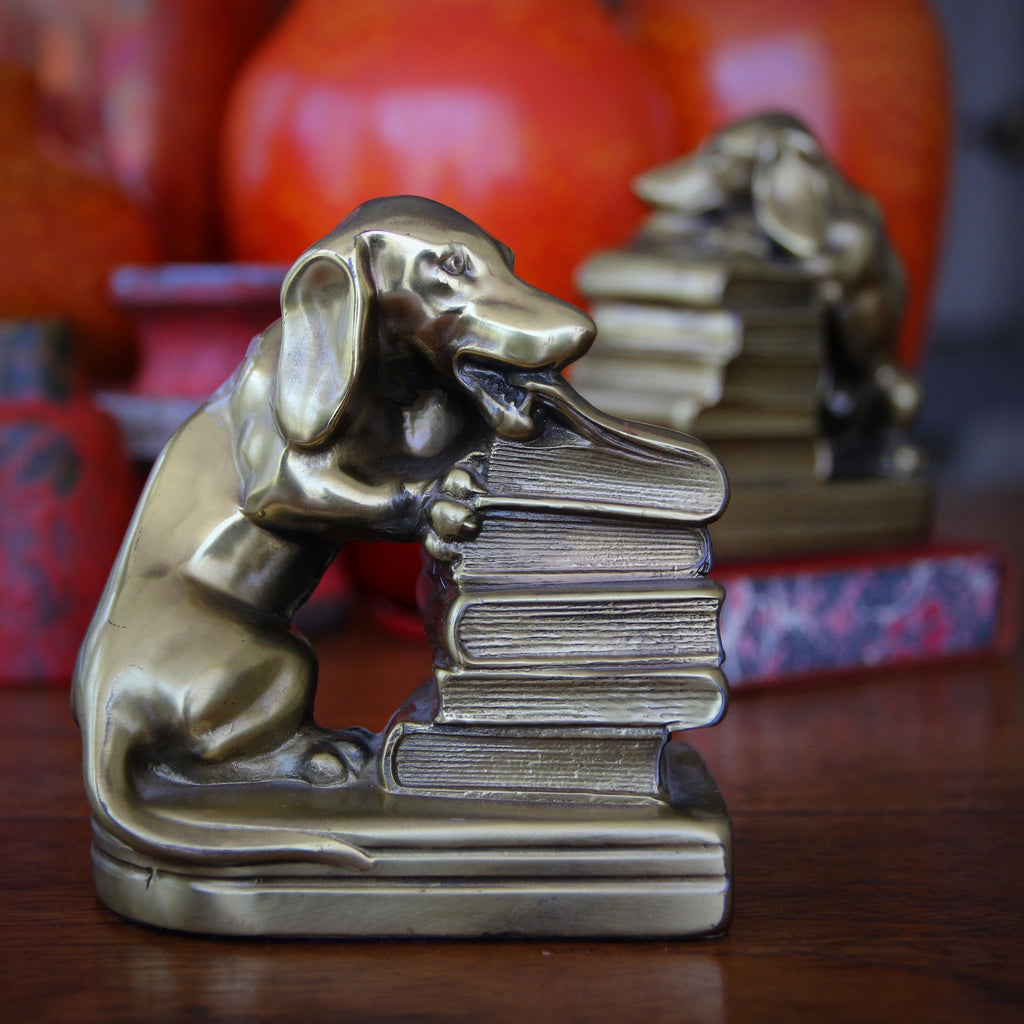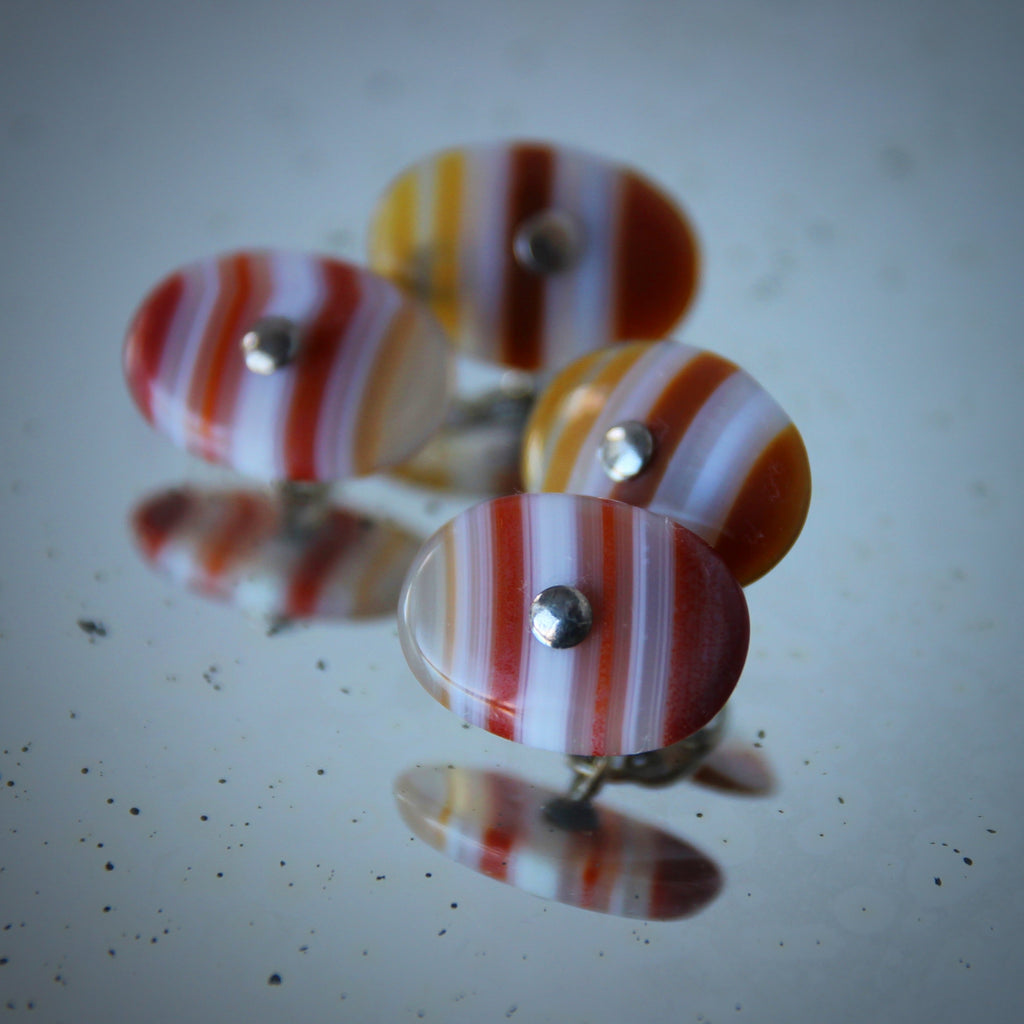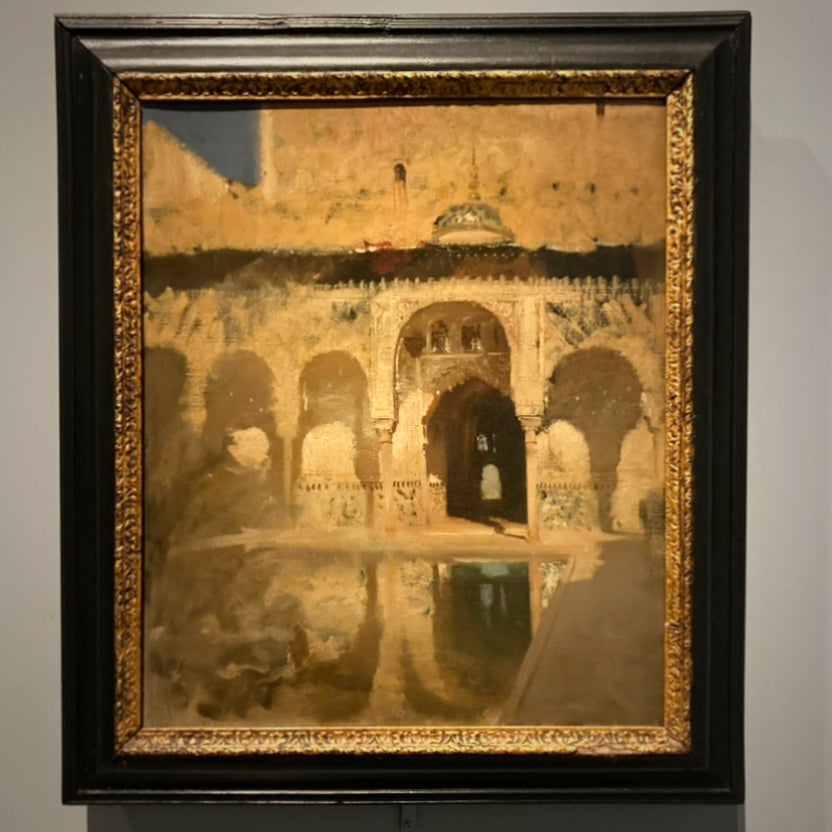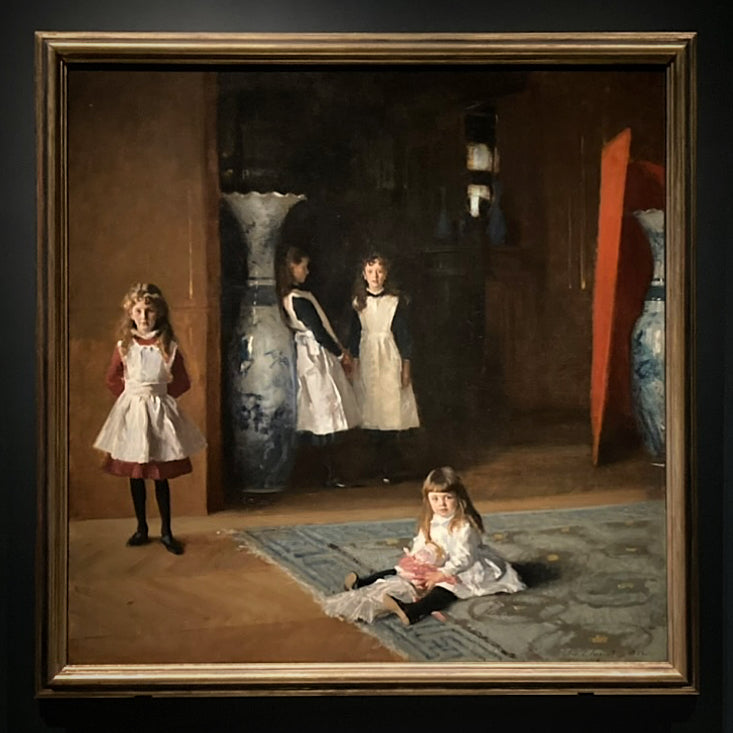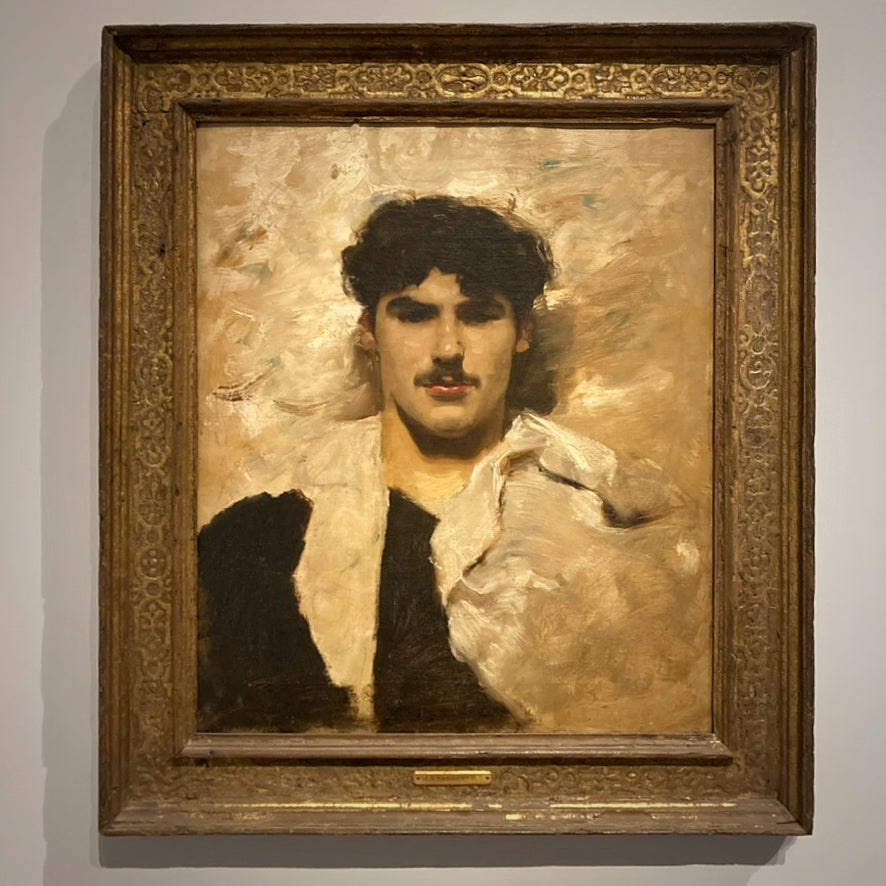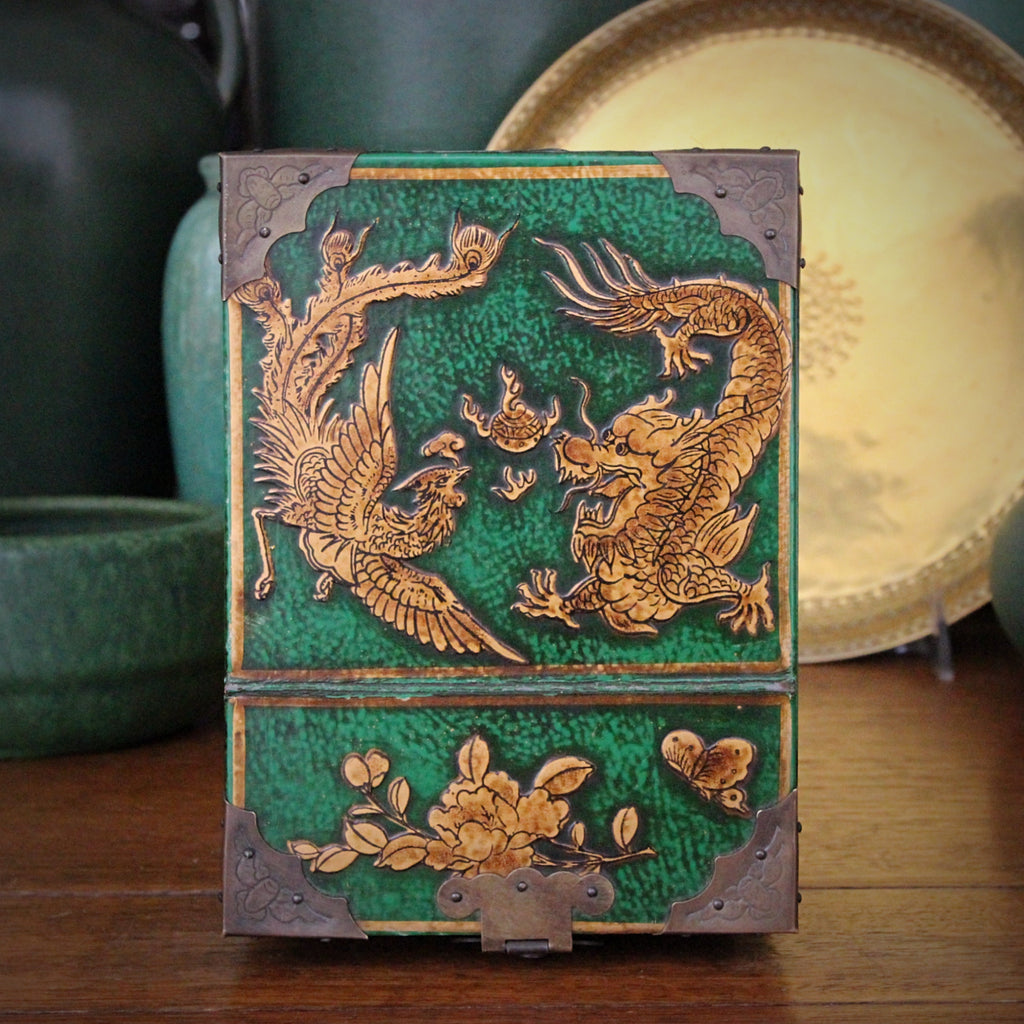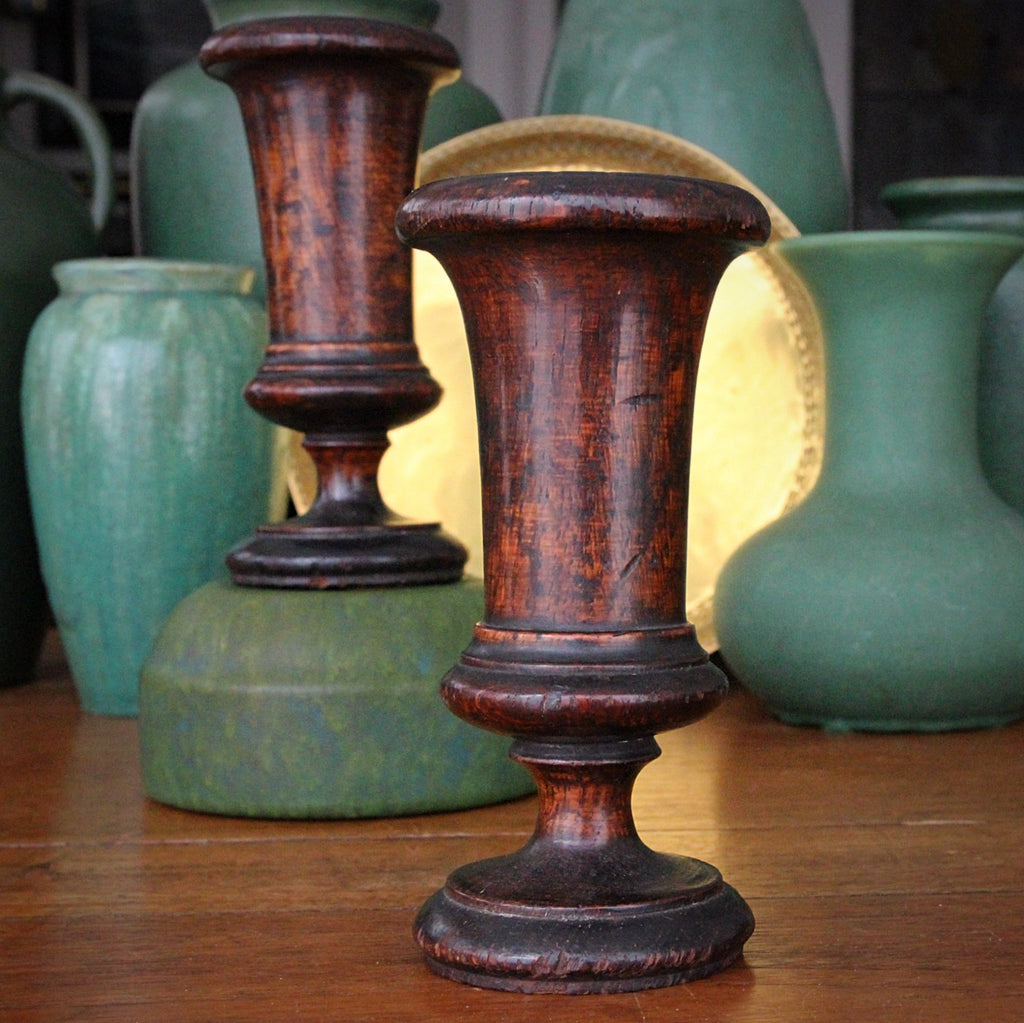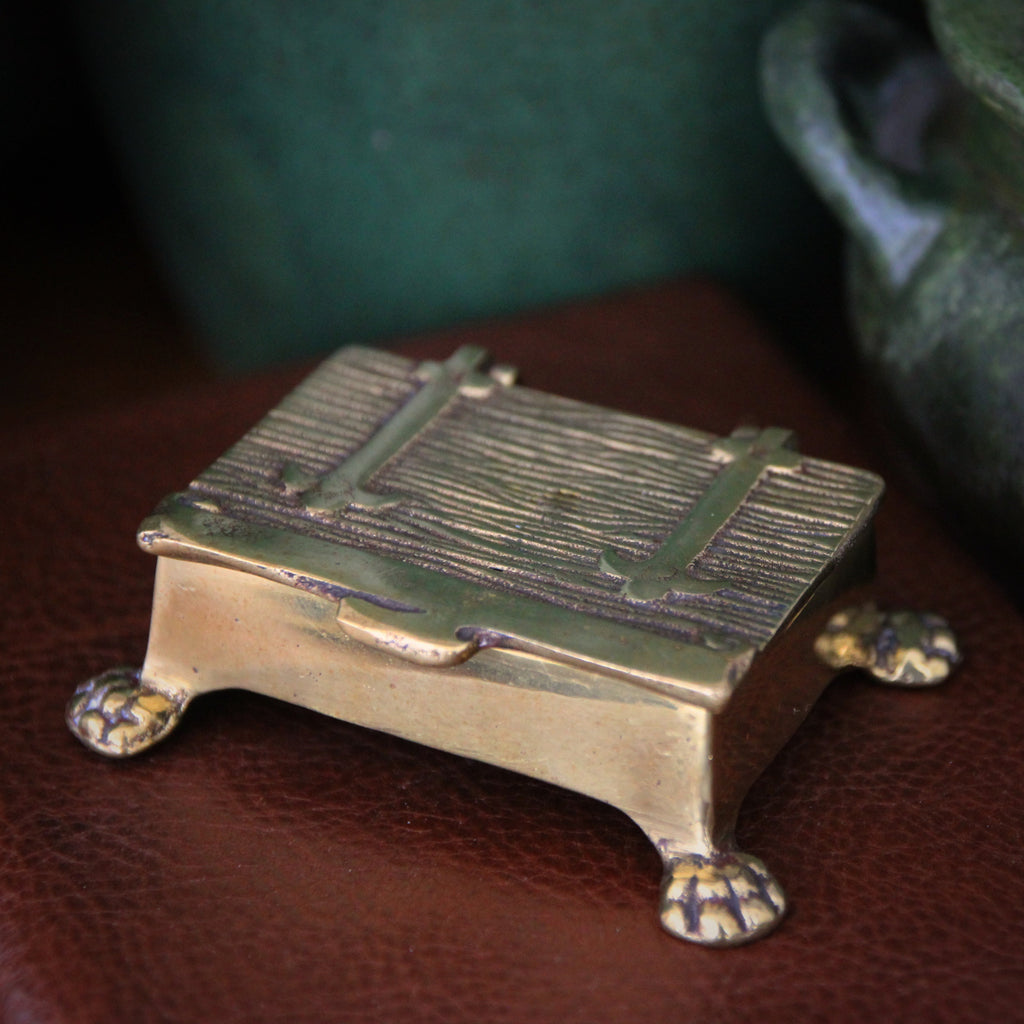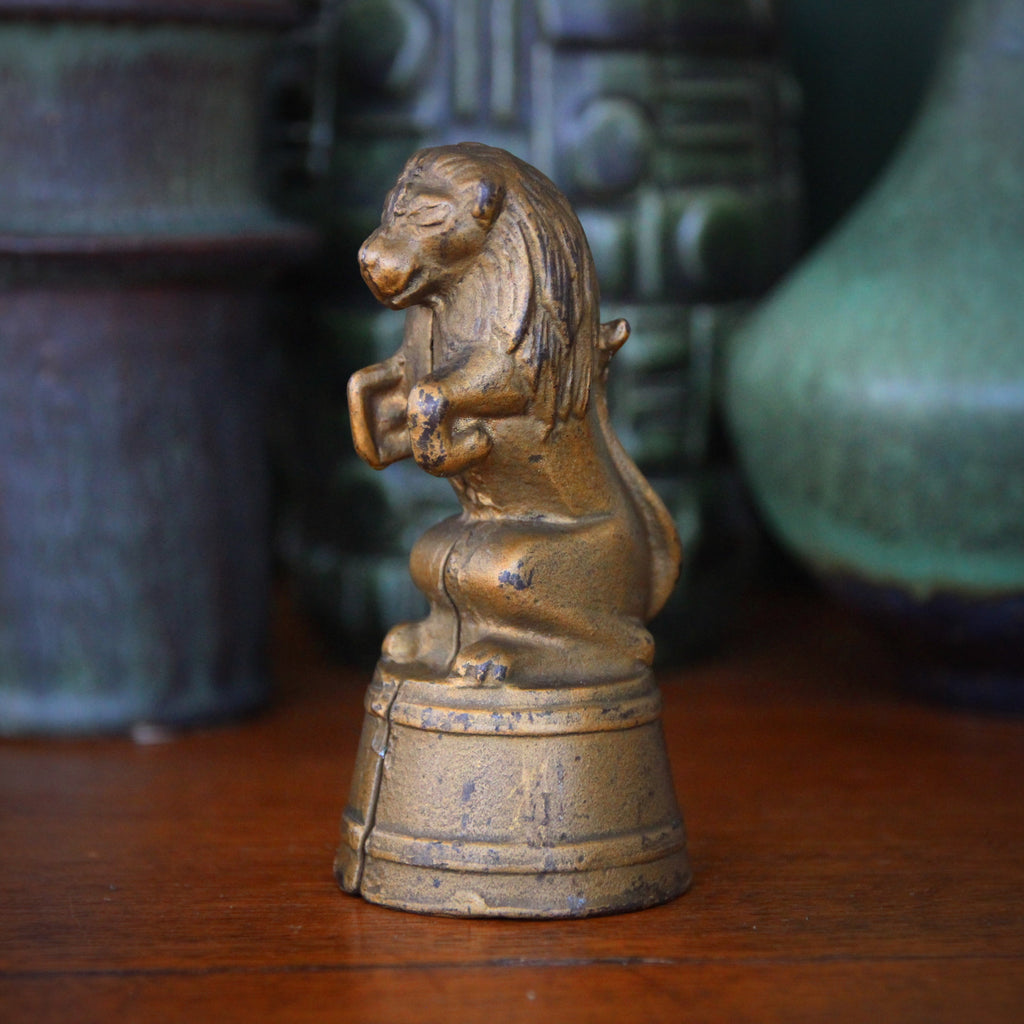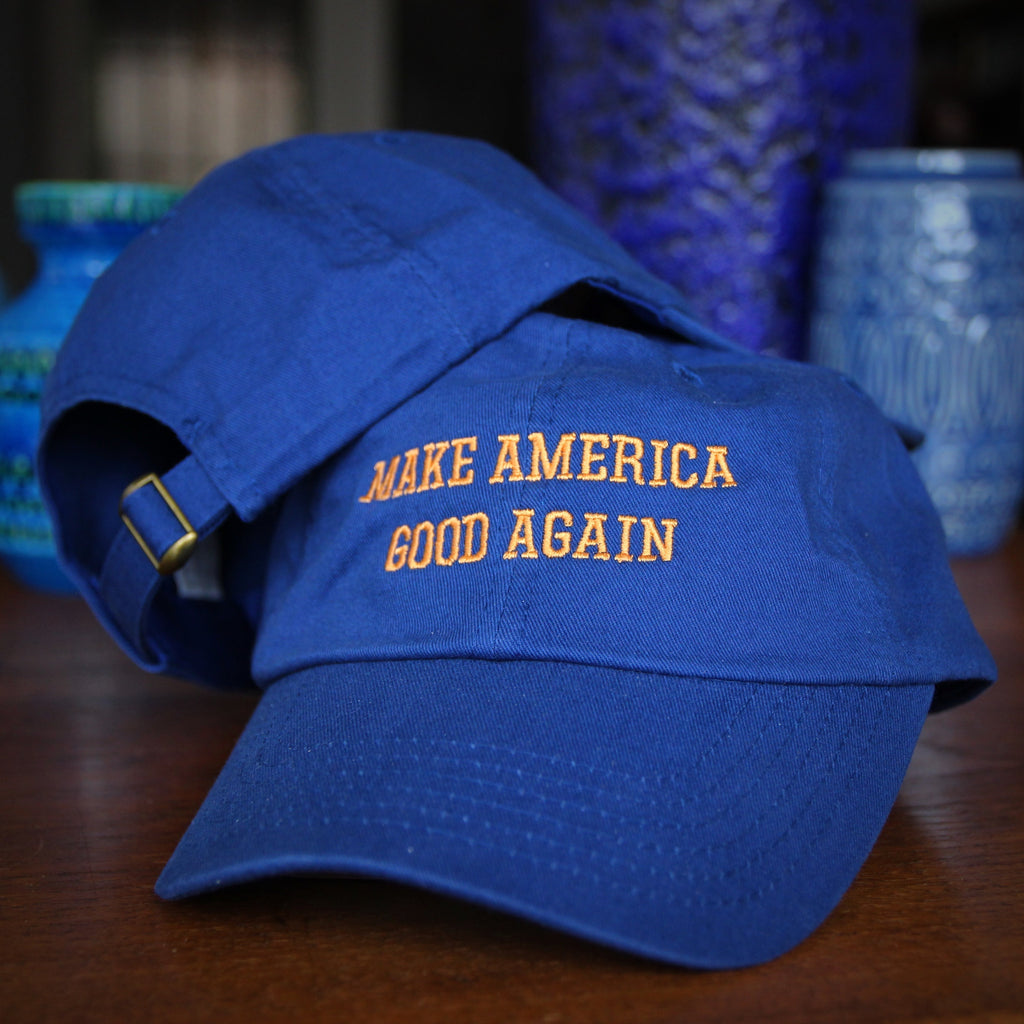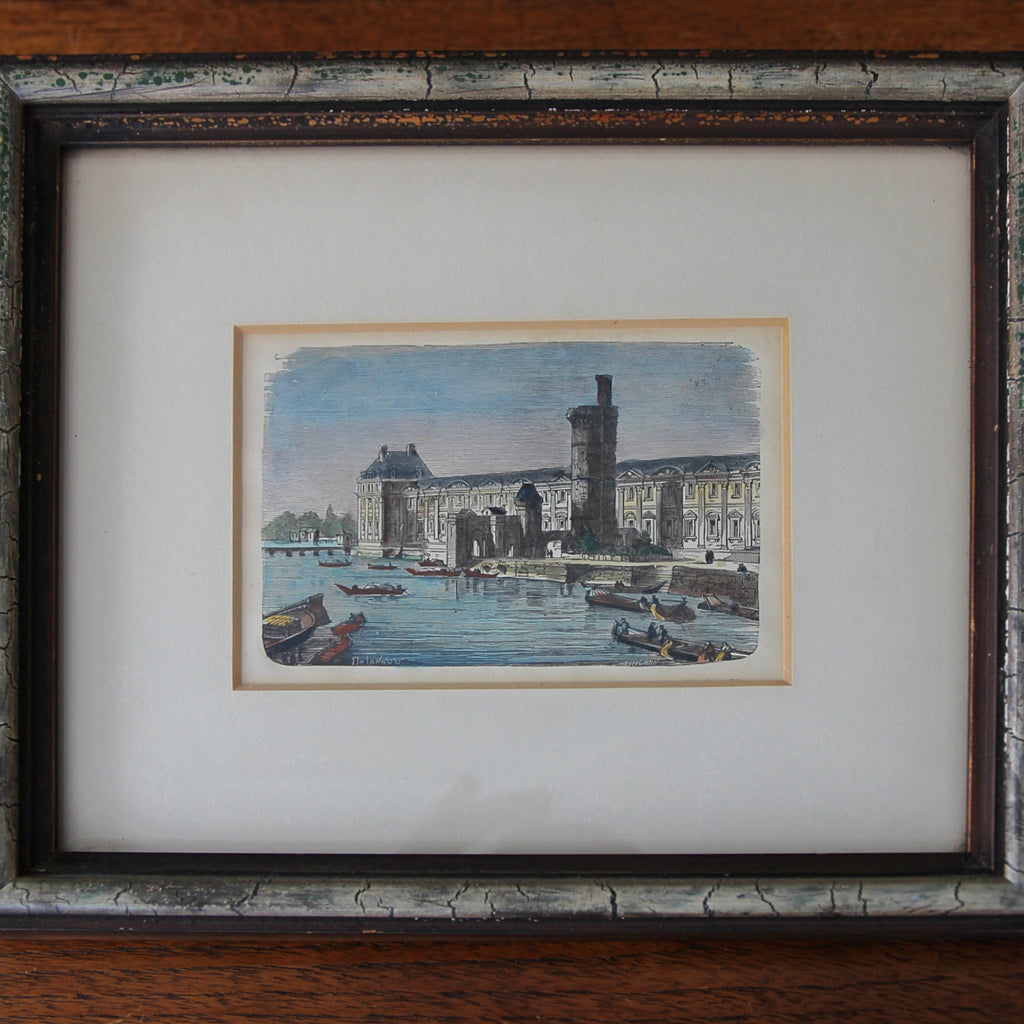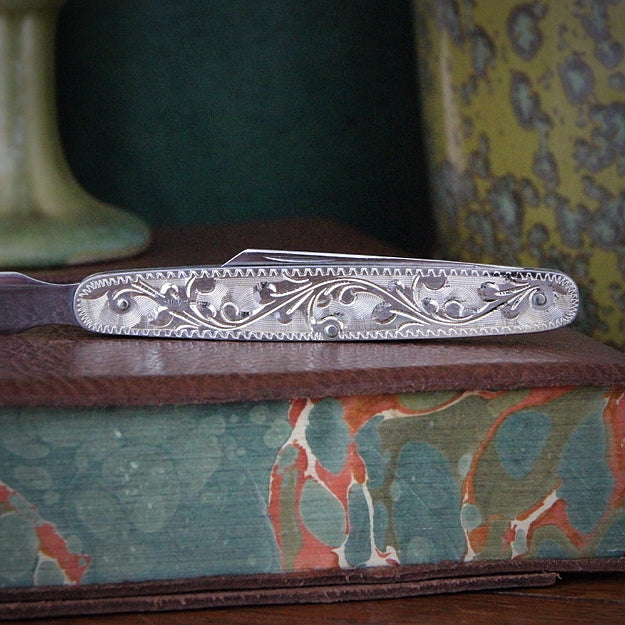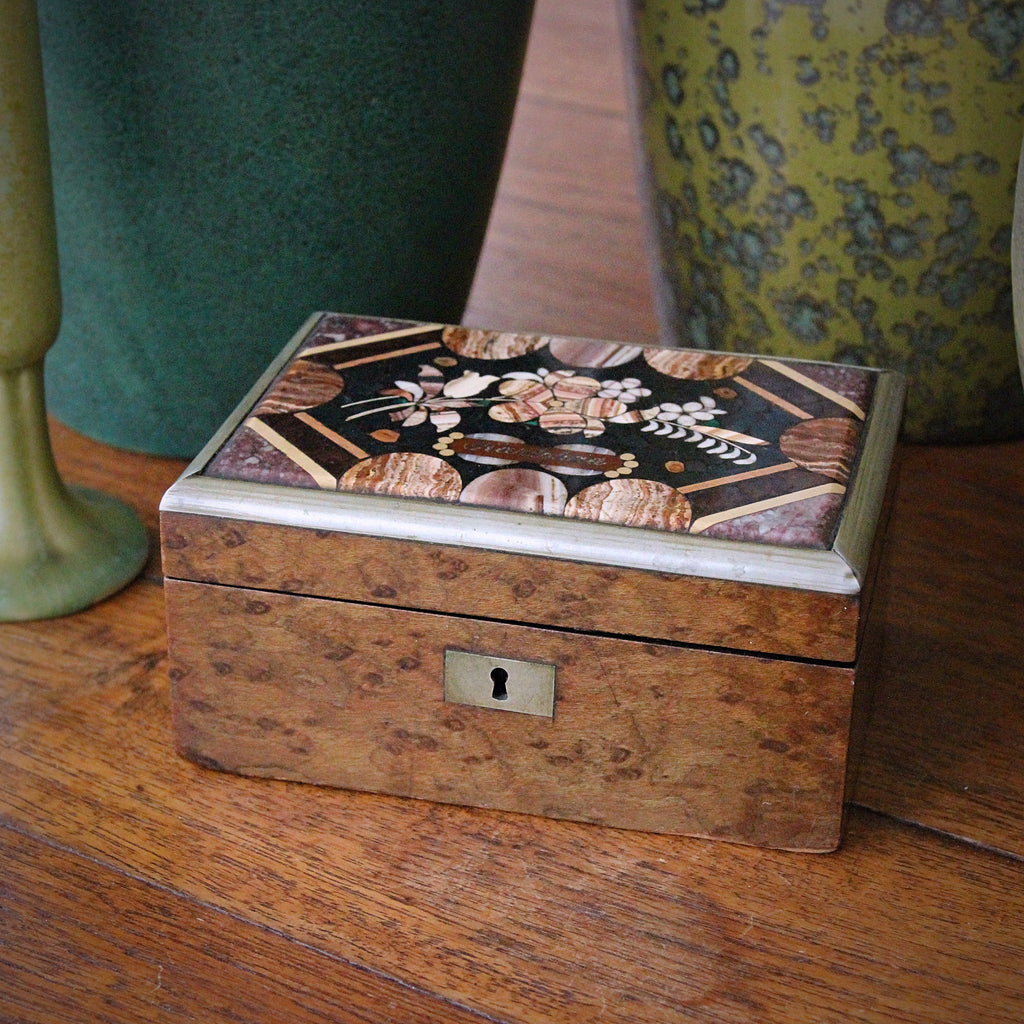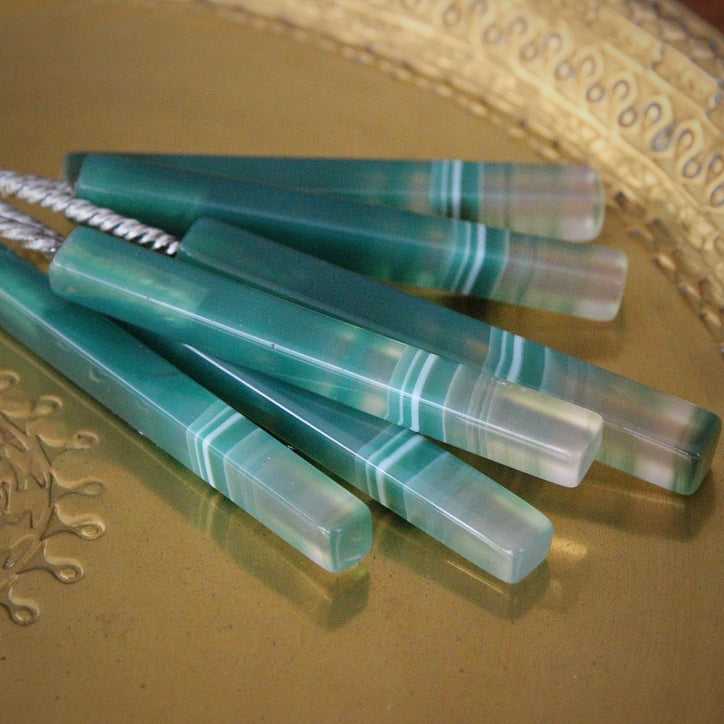JOURNAL RSS
All good things must come to an end, including vacations and time with family. On our last morning on Kauai, we took a short hike with my sister-in-law, Kristen, and my nephew, Levi. The trail began not far from my dad's house. It was an easy, five mile trek and the views were amazing! Shown above, Mount Makaleha, which, at 3,200 feet high, presides over the town of Kapaa. Translated literally, Makaleha means "to lift-up one's eyes" as if to gaze upon something beautiful. When viewed from a greater distance, Makaleha seems to be the smaller sister of the bigger Mount Waialeale (5,142 feet tall)—which stands at the center of Kauai. Usually shrouded in clouds, it is called (by locals)...
Kauai-Bound - VI
Taro—known as "Kalo" in Hawaii—is a tropical bulbous tuber that was a staple food source for the Ancient Hawaiians. The fleshy tuber is not a root; it is a "corm," a thickened part of the underground stem which holds stored energy for the plant's survival (should water or nutrition become scarce). The plant is believed to have originated in India, Nepal or Bangladesh—and spread (by voyagers) throughout Southeast Asia, Oceania and Africa. It became a nutritional staple wherever it was grown. There is archaeological evidence of taro consumption in the Soloman Islands 20,000 - 28,000 years ago (though it cannot be confirmed if that taro was wild grown or cultivated). British explorer, Captain James Cook, observed sophisticated taro plantations in New...
Kauai-Bound - V
For thirty-five years, Bob and I, together, have been visiting my family on Kauai. We always stay with my father. This year, as a treat, we decided to book two nights at the Grand Hyatt Poipu. We have long been familiar with this hotel. Usually, we would walk through the property's gorgeous lobby to get to Shipwrecks Beach—or we would buy passes to work-out at the hotel's gym. Sometimes we would eat in one of the hotel restaurants. But we had never booked a room. We did this time and, boy are we glad to have done so. The hotel is very nice. It certainly has grandeur—though it is grand without a trace of glitziness. Every element of the hotel...
Kauai-Bound - IV
Hawaii has beautiful beaches. When I go to the beach, I want to see water, sand and mountain cliffs—preferably squished-closely together. Hawaii doesn't disappoint in this regard. But, as I've gotten older, I have grown more wary of too much sun exposure. Now I bring along my father's beach umbrella. And I spend no more than 90 minutes at the beach. I prefer to go every day, for short visits. And I always go home with an enviable tan (and no burn). North of Kapaa, where my family lives, is a secluded, remote beach called Donkey Beach. Apparently, it is the area where the sugar plantations once housed their donkeys. Getting to the beach involves a short, rocky hike. The...
Kauai-Bound - III
My father celebrated his 90th birthday two days ago. Though we have had celebratory meals every night this week, tonight, Saturday, we gather for the big party. My father was born in Boston's Chinatown in 1935. His father, a Chinese immigrant from Canton, married an American waitress at the restaurant where he worked. My father grew-up in a poor, working family. Like most immigrants, his father worked hard (for little pay) to ensure that his descendants had a chance at a better life. My dad seized that opportunity. He frequently reminded us that kids who are smart, hardworking and poor can succeed. He got good grades in school and got a scholarship for Sufflok University—where he met my mother, a...
Kauai-Bound - II
Gazing upon the rugged and romantic Na Pali Coast, along the North Shore of Kauai, never becomes tiresome. Most of the island is encircled by roadway, except for this stretch between Ke'e Beach and Polihale State Park, which is inaccessible to vehicles. Seeing it from the trailway, which runs along some of the coastline is enchanting enough. Seeing it from the sea—by boat or helicopter—is even more stunning. Na Pali has provided a ravishing backdrop for many films including Jurassic Park, King Kong, Pirates of the Caribbean, and many others. "Na Pali" means "the cliffs." They were formed five million years ago and have been carved into valleys by the flow of water. The original people who came to Hawaii—first...
Kauai-Bound - I
I have the great, good fortune of having two parents in their Nineties. My father turns 90 today and I have made the 5,000 mile trek to Kauai, Hawaii, to celebrate the occasion with him (and my three brothers). Nothing pleases my father more than to have his four sons, their partners, and his four grandchildren gathered 'round a table. Considering that his parents never made it out of their Sixties, such a milestone is a blessing, indeed. People often ask me, "How can you stand such a looooonnnnng flight? I would love to go to Hawaii, but I can't bear the thought of spending all that time in an airplane." I remind them that the first New Englanders to...
Welcome, October!
Welcome, October, and your birth flower, the marigold. Marigolds comprise dozens of species in the Tagetes genus. The name, "Mary's Gold," is a reference to the Virgin Mary.
Marigolds originated in Mexico and eventually spread South into Central and South America. This pungently-scented plant has been used medicinally, sometimes drunk as a tea, and it is also employed as a culinary herb or food colorant. In South Asia, marigolds are used decoratively—strung into garlands, decorating shrines, or arranged as a carpet—for celebrations and Hindu religious ceremonies. In Catholic Mexico, marigolds are featured in "Day of the Dead" festivities or used to decorate the freshly-cleaned graves of deceased loved ones.
Suleiman the Magnificent
On this day in 1520, Suleiman the Magnificent became the Sultan of the Ottoman Empire, succeeding his father, Selim I. He was 25 years old and ready-for-action. He promptly initiated bold military campaigns against various European and Mediterranean Christian powers—Belgrade, Rhodes, Hungary—expanding his Empire and imposing his religion and laws on these colonies. His reign represents the highpoint of the Ottoman Empire, a territory of 25 million inhabitants. Besides military conquests, he was known for "harmonizing" (blending) the religious laws with the monarchic laws, thus he is sometimes called "Suleiman the Lawgiver" (especially in the Islamic world). He was also a great patron of the arts, literature and fine culture.
Cervantes
On this day in 1547, (it is believed that) Miguel de Cervantes Saavedra was born outside of Madrid, Spain. He would go on to become one of the most-admired writers in the world and his masterpiece, Don Quixote, is foundational to the Western literary canon. Many consider this book the first modern novel and many consider it the world's greatest novel. But much of Cervantes's early life was lived in poverty and obscurity. He and his family often found themselves dodging creditors or the law. Miguel was one of seven children born to a cash-strapped family—a family which some scholars believe were "New Christians" (that is, Spanish or Portuguese Jewish converts to Catholicism). While this heritage may or may not...
Good King Wenceslaus
On this day in 935, Wenceslaus I, Duke of Bohemia (sometimes called "Václav the Good") was murdered by his brother, Boleslaus I (called "Boleslaus the Cruel"). Wenceslaus was remembered as a good and charitable ruler and his martyrdom elevated his legend. His life exemplified the virtuous concept of "The Righteous King" (Rex Iustis)—a leader who demonstrated piety, charity and vigor. He quickly became a subject of local veneration and was declared a saint in very few years. The legend of his goodness spread, especially his generosity giving alms to the poor, orphans, widows, and prisoners. He was crowned "King" after death and (in 1853) became the subject of the English Christmas carol, "Good King Wenceslas."
William the Cockerel
On this day in 1066, Guillaume le Conquérant set sail from the mouth of the Somme River in France. He was leading a fleet of French ships to England to claim what he believed was his—the English Crown! William would ultimately kill his competitor at The Battle of Hastings, namely, Harold Godwinson (who also believed that the crown rightfully was his). This profound event ended the Anglo-Saxon reign of England and inaugurated the Norman Conquest (and the "Modern Age" of the English monarchy). This seismic change affected all aspects of English life: the monarchy, government, culture, language and religion. Today's King Charles III is a descendant of William the Conqueror. Before becoming King of England, William had been the Duke...
"And, In This Corner . . . "
On this day in 1960, the first of four televised presidential debates was held in Chicago between Vice President Richard Nixon and Senator John F. Kennedy. It was broadcast nationwide by CBS. Prior to this, presidential debates were never de rigueur. They are not constitutionally-mandated and, certainly, none had ever been televised before. 66 million viewers tuned-in (out of a US population of 179 million). Each candidate was given eight minutes for an opening statement, three minutes for a closing statement, and 2.5 minutes to answer each of the questions posed by the moderator, Howard K. Smith. The focus was on domestic policy issues. Going into the debate, Nixon held a six point lead over Kennedy. He was the sitting...
Three Months 'Til Christmas!
Has the countdown begun? It's three months 'til Christmas! To help you get into the spirit, a vintage Sixties cookie tin—bright red with a screened Santa on the cover. It was made for Laub's holiday cookies. Laub's was founded by German immigrant, Jacob Laub, in Cleveland, Ohio, in 1889. In time, it became the largest independent baker in all of Ohio with a bakery storefront, bread delivery routes, and a brisk wholesale operation to restaurants, hospitals and grocery stores. The tin is still great for presenting your homemade cookies—or holding any number of Christmas-related items: ornaments, ribbon, or ornament hooks. It is also a nice place to store vintage Christmas cards and photos—the ones you'd like to save for future...
National Punctuation Day
Is punctuation passé? Perhaps it is amongst "the texting generation." Nowadays, capitalization, commas, and periods seem to be treated as . . . optional. While I do text (frequently), I do make every effort to punctuate properly. I attempt to proofread a text message before I hit that blue "send" arrow. With so many norms and standards falling-away (daily), I feel more compelled than ever to keep up the fight—including with my punctuation. Several years ago, I purchased Lynn Truss's book, Eats, Shoots and Leaves. The cover depicts a particular panda removing the title's offending comma. He wants to make it clear that he eats shoots (he doesn't shoot and leave.) I recently came across another argument for the proper...
Shanah Tova
Shanah Tovah and a Happy 5786!
Today is the first day of Rosh Hashanah—the Jewish New Year—which began at sunset last night. The modern holiday is celebrated for two nights, after which comes a period of reflection and repentance before Yom Kippur—the solemn Day of Atonement (the holiest day of the Jewish calendar).
The name Rosh Hashanah is translated as "head of the year," that is, the New Year. The celebration marks the beginning of the civil year and it is also the traditional anniversary of the creation of Adam and Eve.
Autumn is Here
Today is the Fall Equinox—the day in which daylight and nighttime are of (approximately) equal length. The Autumn season begins today at 2:19 pm and each day's darkness will become increasingly longer until 21 December (the Winter Solstice). The Earth spins on an axis which "wobbles" slowly—back-and-forth—first tipping the Northern Hemisphere closer to the Sun and then tipping the Southern Hemisphere closer to the Sun. This annual tipping creates the seasonal light and temperature differences in each part of the world. Today, the axis is angled (more-or-less) straight up-and-down. The Northern and Southern Hemispheres both have "equal day and night." Starting tomorrow, the daylight will get longer in the Southern Hemisphere while it becomes shorter in the North. On-and-on the...
"Long Live Absolute World Peace"
Today is the International Day of Peace. The United Nations established the commemoration in 1981 and it was first observed the next year. The aim of the celebration is to envision (and work towards) a world absent of war and violence. Japan is very aware of the human cost which comes from military aggression. In 1954, Japan presented the United Nations with a "Peace Bell" which was then installed in a Japanese garden on the U. N. grounds. It is a Bonshō style temple bell and it was cast from coins donated from all over the world. Besides current and old coins other metal objects were melted-down to form the bell: bullets, war medals, military badges, even saber guards. Pope...
Magellan Sets Sail
Spices are big business. During the "Age of Discovery"—which began around the time of the Renaissance—daring seafarers played a huge role in pursuing new routes from Europe to Asia. Their ultimate goal was to improve trade routes and make money for their king and country (who usually paid for such expeditions).
Portuguese explorer Vasco da Gama sailed from Lisbon, arriving in India on 20 May 1498. He was the first European to sail all the way to India. Such a journey required sailing through the rough and treacherous waters off the southern tip of Africa—called The Cape of Good Hope—where the Atlantic and Indian Oceans violently converge.
Talk Like a Pirate Day
On 6 June 1995, two friends in Oregon—John Baur and Mark Summers—were playing a friendly game of racquetball. Ouch! Pain! "Aaarrrgghh!!!" shouts one of them. And thus was born "Talk Like a Pirate Day." The friends decided to formalize the commemoration, however, 6 June was unsuitable as it was the anniversary of D-Day, the Landing at Normandy. Mark suggested they set the date for 19 September—his ex-wife's birthday.
The men contacted the Miami Herald humor columnist, Dave Barry, who wrote about (thus promoting) the novel occasion. Since then, people (of a certain disposition) have taken to the event—celebrating the day in their own specific ways (though the phrase "Aaarrrgghh!!!" is usually a part of the fun).
A Dark Horse
In the world of horserace gambling, a "dark horse" was an unknown or unfamiliar racehorse about which gamblers knew little or nothing with which they could strategize their bets. In the 1830's, the term was expanded to include any kind of competitor—in sports, business or politics—who comes out of nowhere (surprisingly) to win the contest. The ceramic "dark horse" bookends, shown above were made in the 1930's or 1940's by Abingdon in Knoxville, IL. Abingdon was a successful maker of durable, high-end plumbing fixtures: sinks, toilets, water fountains. They used a proprietary blend of quality clays, a dense, "vitreous china" which was highly chip-resistant. Abingdon was known for its fantastic glazes and was the first company to offer products in...
If You Can Keep It . . .
It was on this day in 1787 and Benjamin Franklin was leaving the Pennsylvania State House in Philadelphia (now called Independence Hall) where the Constitutional Convention members had just voted to approve the US Constitution—and to send-it-onward to the states to be ratified. Elizabeth Willing Powel, the wife of Philly's mayor, asked him, "Dr. Franklin, what sort of government have you given us?" Ben Franklin responded, "A republic madam, if you can keep it." For 249 years, our democratic republic has served America admirably—certainly imperfectly at times, but (generally) improving with every passing decade. The alternative to a democratic republic would have been a monarchy—and the Founding Fathers decided that America must reject an entitled autocrat, gorging himself on plunder...
The End of the Trail
Today is the National Trail of Tears Commemoration Day—which marks the day in 1838 when the last of the (surviving) Cherokee Indians completed their forced march from their homeland (in the American Deep South) to the newly-christened "Indian Territory" (now called Oklahoma). As the country's population of European-Americans grew, they began to petition the federal government to clear the Indians from the American Southeast—territory which the white settlers wanted to inhabit. When gold was discovered in Georgia in 1828, the drumbeat intensified. They found an enthusiastic advocate in President Andrew Jackson who pushed-through the Indian Removal Act of 1830, legislation which authorized the federal government to relocate members of the "Five Civilized Tribes" including the Cherokee, Muscogee, Choctaw, Chickasaw and Seminole...
The International Day of Democracy
In 2007, the United Nations resolved to mark 15 September as The International Day of Democracy—and the commemoration has been observed since 2008. The UN sought "to promote and uphold the principles of Democracy, encourage member states to commemorate the day, and work to raise public awareness of the need to protect Democracy." Has your country's leader promoted the date?
What is Democracy? The United Nations defines Democracy as the "universal values based on the freely-expressed will of people to determine their own political, economic, social and cultural systems."
Time Flies
On this day in 1752, Great Britain adopted the Gregorian Calendar, thus abandoning the Julian Calendar which it had been using for over 1700 years. This switch of systems meant of a loss of eleven days. The people of Great Britain (and its possessions, including the Original Thirteen American Colonies) went to sleep on Wednesday 2 September and woke-up the next morning, Thursday 14 September. For those who thought Y2K might be disruptive, the change to the Gregorian Calendar was truly a shake-up! The older, Julian Calendar was adopted in 45 BC (under the dictator, Emperor Julius Caesar). It accounted for a 365 day year, plus a leap day every fourth year. Although this was fairly accurate, it was still...
International Chocolate Day
Today is International Chocolate Day (not to be confused with World Chocolate Day, 7 July). It is also the birthday of chocolatier and philanthropist, Milton Snavely Hershey—born on this day in 1857. Hershey was born into a Mennonite family in Derry Township, Pennsylvania, and grew-up speaking Pennsylvania Dutch. He left school after the fourth grade and began working (including apprenticeships under several confectioners). His first two (short-lived) businesses were in Philadelphia and New York. But, having learned how to make caramels, Hershey returned to Lancaster, Pennsylvania in 1883 where he founded the Lancaster Caramel Company. The company was a grand success. By the Turn-of-the-Century, Hershey was employing 1300 workers. In 1900, he sold the company for $1 million, allowing him...
We Choose to Go to the Moon
On this day in 1962—a warm and sunny Texas day—President John F. Kennedy stood before 40,000 spectators in the Rice University Stadium. He laid-out his vision for America's essential leadership in "the space race." "I believe that this nation should commit itself to achieving the goal, before this decade is out, of landing a man on the moon and returning him safely to Earth." He added, "We choose to go to the Moon in this decade and do the other things, not because they are easy, but because they are hard." His goal (and the speech which inaugurated the campaign) was a challenge to Americans to show the world (and themselves) that the U.S. could do great things—for the benefit...
24 Years On
So much can happen in 24 years. So much can happen in a moment.
For me, time is starting to blur. The day itself, 11 September 2001, remains crystal clear—and it probably always will. I remember, like yesterday, my feelings and the surge of neurotransmitters—those helpful brain chemicals which heighten awareness, quicken response time, and prepare one for a "fight or flight." And, yet, how can 24 years have passed since that day? So much has happened; so much has changed. Friends and family have been born. Friends and family have died. Democracy has rallied. Democracy has flagged. Hope has flourished. Hope has been dashed.
Donkey's Years
Donkeys—about 40 million of them worldwide, divided amongst some 185 varieties—all originate from the African Wild Ass (Equus asinus asinus). For centuries, the word "Ass" was the universal name for the creature (even in the Bible). Males were called "Jacks" or "Jackasses." Females were called a "She-Ass." But, starting in the Eighteenth Century, the name became viewed as, shall we say, impolite? (It was the same time that "cocks" became "roosters" and "coneys" became "rabbits.") "Donkey" has become the most popular (English) name, to this day.
Party Animal
The Donkey long has been the mascot of the Democratic Party. It began during the U. S. presidential campaign on 1828. Democrat Andrew Jackson—called a "Jackass" by his opponents—decided to lean-in to the sobriquet. He embraced the Donkey as part of his brand: stubborn, steadfast, determined and willful. But it wasn't until the 1870's when the Donkey really took-off as the symbol of the P-O-D, The Party of Democracy. Artist Thomas Nast (1840-1902), a German-born immigrant to New York City, became the country's first great political cartoonist. His long career with Harper's Weekly (1859-1886) gave him a platform to skewer and satirize political performers. And he took a special joy in going after bullies. While Nast did not create the...
Pin-the-Tail-on-the-Donkey
On several occasions, while traveling, I have been offered a donkey ride, up a steep hill (for a fee), which I have declined on principle. I can't bear the thought of making this poor little creature's life any more difficult than it already is. Besides, a brisk climb up a steep hill is great exercise for me—and it makes the ultimate view that much the sweeter. In England, donkey rides are a popular beach-time attraction. The British Equine Society instructs that donkeys should never be made to carry a rider over 50 kilos (110 pounds). Donkeys should be given a one hour break at lunchtime (or in the early evening). And donkeys must be afforded one day off per week....
Donkey Work
Donkeys have done so much for mankind and, yet, they are frequently overworked, abused and neglected—even as they continue to labor for us. They are the original "beasts of burden." Donkeys are among the earliest domesticated large animals. There is evidence of their living alongside mankind up to 7,000 years ago in Africa (from where they originate). They are depicted in Egyptian tomb paintings—and their skeletal remains have been found buried within those tombs. They originated in East Africa and spread throughout the world—over millennia of human conquest, immigration and trading. Today there are about 185 genetic varieties of donkeys. 96% of the world's donkeys are in underdeveloped countries.
Johann David Hollenbach
Johann David Hollenbach (1810-1871) was an esteemed Viennese metalwork designer, bronze caster and metal fabricator. He produced his own designs but also cast (or crafted) the metalwork creations for other artists and designers. His foundry cast bronzes for sculpture artists and produced the metal "mountings" which were used as components for larger pieces (for example, the bronze decorative elements which might be mounted upon a clock or a piece of furniture). Hollenbach's works embellished the finest homes, palaces and cultural institutions—in Vienna and farther afield. He served the Habsburg family (including the Emperor, Franz Josef), as well as Napoleon III of France and the Russian Tsar's royal family. He created the magnificent electrified candelabras in the Vienna State Opera. And...
More Sapphire - IV
Here's another stunning piece by Wendelin Stahl, made in the Fifties or Sixties. This heavy, slab-form piece is pure sculpture—and a statement piece, wherever it may be placed. But it's the masterful glazing which makes the piece exquisite. An organic, taupe glaze flows down the sides of the piece, over a stunning sapphire crystalline glaze. The juxtaposition of brilliant, heavenly glazing on such a heavy (perhaps Brutalist?) form gives this piece an aesthetic tension: the delicate balanced with the brutish. Beauty and The Beast.
More Sapphire - III
We're looking at sapphires this week—or, at least, items which have a sapphire appearance. Shown here, a set of six Modernist stems blown in smoky-sapphire crystal. It's a sophisticated color, sure to make an impact on any dining table. And, atop each glass, we find a rim of platinum. This metallic band looks sharp and it helps to protect the delicate edge from chipping.
More Sapphire - II
Wendelin Stahl was born in 1922 in Höhr-Grenzhausen, Germany. He was born into a family of skilled ceramicists and worked in his father's studio. After World War II (and after art school where he studied ceramics), he and his wife, ceramicist Else Harney, founded their own studio. Their workshop was in "Burg Coraidelstein," the medieval castle in Klotten. Stahl experimented with elegant, Modernist forms—glazed with complex, beautiful glazes. Stahl allowed other artists to display their works alongside his pottery. Many consider him the finest of German Modernist ceramicists. Shown here, a high-shouldered, cylindrical vase with organic, dripping glazes. A metallic, gunmetal-mushroom glaze runs down over a vibrant, sapphire blue crystalline glaze. The piece is classic and Modernist at the same...
More Sapphire - I
We're celebrating September's birthstone—the sapphire—by sharing some of our favorite items which tip-the-hat to the regal blue stone.
Shown here, a bronze presentation "casket" decorated with sapphire glass cabochons. It was made in the Teens or Twenties, specifically to present a pearl necklace by La Tausca. Although La Tausca made synthetic pearls, they were still a luxury item—which required a luxurious presentation. La Tausca synthetic pearl necklaces would come in ambitiously crafted boxes like the one shown here.
This bronze casket is decorated with sapphire glass cabochons and filigree mounts.
Welcome, September
We welcome September—and her regal gemstone, the Sapphire. Mankind has long been fascinated by sapphires. From the Middle Ages, sapphires have symbolized loyalty and trust. People would wear sapphires as a talisman to protect against danger or other harm. Italian superstition tells us that sapphires will protect the wearer from eye disease and melancholy. Sapphires are amongst the hardest of gemstones—and the most expensive. They are one of the four "cardinal" gemstones, alongside rubies, emeralds and diamonds. Sapphires belong to the corundum family which includes rubies. In fact, sapphires and rubies are often found in the same areas, though one of the stones usually will predominate. Sapphires are mined in Africa, Russia, Australia, and parts of Asia (most notably, India)....
Antonio Canova and His Lion
Let's say farewell to August with this handsome and impressive lion, modeled after The Vigilant Lion sculpted by Antonio Canova in the late Eighteenth Century. Antonio Canova (1757-1822) grew-up with marble dust in his veins. He was sculpting as a very young boy. He was born in Possagno, Italy (outside of Venice), and lost his father (who was a stonecutter) when he was four years old. He was taken-in by his grandfather, a stonemason and owner of a quarry. Canova's grandfather sculpted marble altars in the Late Baroque style. By the age of nine, young Canova was modeling clay and carving marble. At 12, Canova began a two year apprenticeship under Giuseppe Bernardi. He then worked under Giovanni Ferrari before...
Roseville
Roseville's ceramics legacy is divided into several different "periods" of output (Early-, Middle-, and Late-) and their highly-varied design lines over many years. The company began in Roseville, Ohio, in 1890, making "utilitarian wares": crocks, flowerpots, cuspidors. In 1898, Roseville purchased a larger ceramics factory in Zanesville, Ohio (some 10 miles away), and, by 1900, had expand into a range of higher-end, hand-painted art wares. Designer Frederick Rhead joined the company as Art Director (1904-1908) and had an enormous impact on "aiming" the company in the right direction. Frederick's brother, Harry Rhead, took the reins in 1908 and created several profitable lines. Then, in 1918, Frank Ferrel became Art Director (for the next 30 years) and oversaw the explosive creation...
Pottery Illustrates Humanity
From the earliest human civilizations, ceramics have been one of the most important signifiers of mankind's ingenuity and aesthetics. Indeed, shards of pottery—sometimes painted, sometimes carved—are amongst the most illuminating remnants of an ancient culture. Pottery was used both functionally and decoratively. It was used to hold liquids: water, wine, oil. It could be used to store foodstuffs: olives, spices, salt. And it could be used ceremonially: in religious or funerary rituals. But ceramics also have been made for strictly aesthetic reasons. And the finest works—wherever in the world they were made—were highly coveted by those who could afford them: monarchs, warlords, industrialists.
LEO is Thirty
On 28 August 1995, LEO Design opened its doors for the first time. It feels like only yesterday . . . What started as a shoestring operation grew in time. There were thousands of (unpaid) hours logged and more than a few lucky breaks along the way. Nothing would have happened without wonderfully supportive customers. And, most of all, we built a staff that exceeded every expectation I could have envisioned. My staff made the business work; they befriended our precious customers; many of them have become dear friends—even to this day. LEO Design premiered at 413 Bleecker Street. At the time, Bleecker Street was unselfconsciously (and unapologetically) "mom and pop." There was a pet bird shop (which later became...
Marblehead
In 1904, Dr. Herbert Hall opened a "handicraft shop" at his sanatorium in Marblehead, Massachusetts. His goal was to provide occupational therapy—woodcarving, weaving, metalwork, ceramics making— for female patients committed with "nervous disorders." He believed that creative work would have a curative and "normalizing" effect upon his patients. Arthur Eugene Baggs, an 18 year old ceramics student from Alfred University (in Western New York State), worked with the Marblehead patients during his summer break in 1905. At the end of the summer, when he should have been returning to school, Baggs was induced to stay permanently—to "professionalize" and manage the hospital's ceramics studio. Alas, most of the patients did not possess sufficient talent to produce high-quality wares and, in 1908,...
Summer Skies
Is there anything more beautiful—more pristine—than a lovely summer sky? Whatever the shade of blue, whether with clouds or without, nothing is more perfect than a bright, heavenly-blue firmament. These sky blue candlesticks were made outside of Manchester, England, by Pilkington Royal Lancastrian. The company had a very inauspicious start. In 1889, the four Pilkington Brothers began to dig for coal along a new seam in Clifton, Greater Manchester. They found no coal; all they got was clay! At first, they attempted to make bricks, but the "marl" they uncovered was not ideal for that use. The secretary of the coal company happened to know William Burton, a chemist at Josiah Wedgwood, which was a successful, 130-year-old ceramics factory in...
A Penny Saved . . .
The US Mint has announced that it will discontinue the production of pennies in early 2026. It seems that the humble penny is yet another American institution which will not survive the nation's Semiquincentennial. The Philadelphia Mint "struck" the first official US Penny in 1793, the year after the Mint was established by Congress. It has been copper (or copper-plated) ever since. From 1859 to 1909, the Mint produced the "Indian Head" penny. Then, in 1909 (which was the Centenary of Abraham Lincoln's birth), the Mint produced the Lincoln Penny with the president's profile on the obverse (and wheat sheafs on the reverse). This coincided with a period of "Lincoln Mania" in America—and the public really embraced the new coin....
Happy Independence Day!
On this day in 1991, Kiev adopted the Ukrainian Declaration of Independence, proclaiming its freedom as a separate, sovereign and independent nation. In February of 2014, Russia invaded Ukraine, occupying Crimea. Russia escalated its attacks on the rest of the country in February of 2022. Today, Ukraine is fighting to defend its independence. It is fighting for its very existence. All good people who believe in Democracy and the Rule of Law must support the Ukrainian underdog. Appeasement of dictators never ends well. And dictators, once emboldened, rarely stop their oppression. Slava Ukraini!
Bird Watching - VII
Let's end our week of birds with this graceful bronze swan. She will glide endlessly across your desk or windowsill—a reminder that elegance is often accompanied by tremendous strength and determination.
Bird Watching - VI
Built for speed, the peregrine falcon is the fastest animal on Earth, having been clocked diving at 240 miles per hour. They have been long admired by humans—sometimes worshipped as a god (as the Egyptians did) or domesticated and trained as treasured hunting and sporting companions (in the Arab Middle East). I recall an incident in 2017 in which a Saudi prince purchased 80 airplane seats for his 80 falcons. I have even heard that some falcons have passports, which allows them to travel across international borders with their keepers. Peregrines are found all over the world except in extreme polar regions, in very high mountains, or in tropical rainforests. They even have been known to live in cities which...
Bird Watching - V
Every delicate detail of this pair of sparrows has been captured by the sculptor—feathers, eyes, even the quizzical cock of the head. They are cast in brass then finished with a verdigris bronze patina. The pair would love to spend their winters indoors, with you—on a shelf, mantelpiece or windowsill—though they could endure a life outdoors (where they will age in the weather).
Bird Watching - IV
As Summer comes to an end—and the winter chill sets-in—the birds scurry about, preparing to hunker down in the snow or fly away South. We're sharing some of our favorite birds with you this week, all currently in-stock at LEO Design.
Two nest eggs shine from within their bronze nest—a textured "bowl" which is useful for so many other things. The juxtaposition of shiny bronze against rustic bronze gives great character to this piece.
Bird Watching - III
Don't let the appearance of this crusty and weathered parrot mislead you. The tinkle of this tea bell is sweet and clear—perhaps to the disappointment of the Irish maids (like my grandmother) who were expected to respond quickly to his call. Made of bronze in the late Nineteenth Century, it was colorfully "cold-painted" after being cast and chased (cleaned-up of burrs and roughness). Over the years, much of the paint has worn-down. But his worn visage reveals tremendous character. I can see Miss Havisham ringing this bell, summoning Pip into her sitting room, where she rocks in her decades-old wedding dress. I nearly expect the parrot to answer her questions!
Bird Watching - II
Nils Thorsson (1898-1975) was a Swedish-born ceramicist who worked for—and greatly influenced—the Royal Copenhagen ceramics workshops, especially during the Modernist boom following World War II. Royal Copenhagen was founded in 1775 and had already reinvented itself several times in the past. However, to position Royal Copenhagen for success after the War, Thorsson recruited to his Aluminia Fajance division (in 1958) a group of six young women—Scandinavian ceramics designers from Norway, Sweden and Denmark. One of these women was Beth Breyen. She was Norwegian and a student from the National Craft and Art Industry School in Oslo (1956-1960). Nils Thorsson worked with Beth (and the other women) to develop the Tenera line. He allowed each designer to see where her inspiration...
Bird Watching - I
At this time of year—late in the summer, heading towards autumn—I see the birds busily scurrying-about, preparing for the winter chill to come. I imagine that they are eating as much as they can, preparing for a long flight south (or a cold hunkering-down here in Pennsylvania). Over the next several days, we'll be sharing som of our favorite birds, now in-stock at LEO Design. This little fellow, round as a ball, seems to be well-prepared for the coming season. Perhaps he is too well prepared? Can he still even fly? His fluffed-up feathers suggest that he's preserving heat—or that he's a little miffed, at what we will never be sure. He's made of cast brass, finished with a verdigris...
So Much Sun - V
We call "our star" The Sun. Others call it the Sunne, Sünn, Sonne, Sinne, Sunna, Sunnō, Sauil, Slunce, Sōl, or Sól. The Greeks call it Hēlios and the Welsh call it Haul. For billions of years, the Earth has been flourishing thanks to the Sun's heat and light—which takes about eight minutes to get from he Sun to the Earth. We end our parade of "Solar Ceramics" with this handsome and imposing piece by Pilkington Royal Lancastrian. It was made in England in the Twenties or Thirties. It wears the handsome "curdled" glazes—yellow and orange—which have inspired this week's exploration of the Sun. It would make a substantial impact in your home, either standing alone or centering a collection of...
So Much Sun - IV
Scientists tell us that the Sun is approximately 4.5 billion years old—nearly half-way through the "Main Sequence" of its lifespan. It has another 5 billion years (more or less) of hydrogen to burn, similar to the way it burns now. When the Sun no longer has enough mass remaining to stay tightly-compact, it will expand enormously, becoming a "Red Giant"—swallowing Mercury and Venus and making the Earth too hot to be habitable by living organisms (eventually swallowing-up the Earth, too). After the Red Giant burns-up any of its remaining fuel, it will contract into a hot, small, White Dwarf—no longer generating new heat but undergoing a long cooling process (over trillions of years) into a Black Dwarf, which will continue...
So Much Sun - III
The Sun provides the Earth's heat and light—without which, the Earth could not sustain life as we know it. Without the Sun's radiant heat, the Earth would freeze in space's frigid atmosphere. Without light, the Earth's plants could not grow—which provide oxygen and food for other creatures. The Earth's orbital track is the perfect distance from the Sun, beautifully situated in a "sweet spot" that is not too close, not too far. Of course, the seasonal tilting of the Earth (from winter to summer) has an enormous effect on regional temperatures and light. Even this small amount of difference (in distance from the Sun) can make a big difference in regional conditions. Imagine if the Earth's entire orbit were to...
So Much Sun - II
What is the Sun? How was it made? Scientists have spent lifetimes studying, contemplating, speculating, and advancing our knowledge of the Sun. For millennia, the Sun has been a frequent object of human veneration—sometimes even worshipped as a god—by societies who recognized its life-giving force, without which life on Earth would cease. In a nutshell, the Sun is a star—the biggest, brightest and hottest object in our Solar System—around which Earth (and other planets) orbit. The Sun (and the Solar System) was formed when an ancient "Molecular Cloud" began a process of "gravitational collapse," probably triggered by another star's violent explosion. Most of this material (99.86%) rushed to the center, forming the fiery Sun. The remaining few bits (0.14%)...
So Much Sun - I
Is it me? Or is Summer somehow more . . . brutal . . . than I remember? Sure, we've all grown accustomed to the comforts of air conditioning. But this Summer has seemed continuously hotter and drier than the previous Summer (or the 50 Summers before that). In the past, the occasional summertime hot spell was interspersed with more moderate, sometimes cool-ish (and rainy), periods. Now it just seems always to be hot and dry. My little garden has been savaged. My tiny patch of grass is brown. The Sun—that flaming, molten ball of fire in the sky—seems to be more threatening than ever. Climate change and man's damage to the atmosphere add greater alarm. Over the next...
The Dog Days of August - I
We're marking the last few days of The Dog Days of Summer (which ends today) with a sampling of our collection of handsome dogs—all currently in-stock at LEO Design.
Here is another charming pair of canine bookends. These were made in the Seventies by "Philadelphia Manufacturing Craftsman." The company was founded by the Startzman family in 1911. Initially, they fabricated metal parts for other manufacturers. In the Fifties, they added "slush-metal" bookends to their production, using old moulds which they had purchased from other bookend makers and some of their original designs. In the Seventies, they moved to Florida and continued to produce bookends.
The Dog Days of August - II
I love dogs. Especially my dog. But I do love all dogs—whether real, painted, sculpted or photographed. I also love books. And I love sculpture. Thus, it will be no surprise, that bookends are a large and cherished part of the collection at LEO Design. Bookends tick many boxes for me. The "Golden Age of American Bookends" flourished between the wars, in the Twenties and Thirties. This is the era in which art and good taste, combined with accelerating industrial mass production, resulted in the country's biggest and most-varied output of excellent bookends. Cast iron was the most common material employed. Solid bronze was used, to a lesser extent. Hollow cast spelter (white metal) was used sparingly (though it would...
The Dog Days of August - III
This quirky little pet brings with him a touch of whimsical charm. Charismatically sculpted and cast in polished bronze, his feet reveal a little secret: the letters L-I-F-E imprinted on the bottom of each paw. "Dog's Life." The phrase was coined in the 1500's to refer to an unhappy and miserable existence—such was the lot of dogs at the time. Today, however, most dogs have a rather charmed existence—at least my pup, Benji, does. I wish for the day when all dogs (and cats and birds) can enjoy such a wonderful dog's life.
The Dog Days of August - IV
The "Dog Days of Summer" are upon us. This year, they occur from 3 July through 11 August. As we count-down the last four days of the season, we'd like to share some of our favorite canines, now in-stock at LEO Design. Sirius—called "The Dog Star"—is the brightest star in the sky. Astronomers have noted and tracked it for thousands of years. They charted its annual appearance and movement through the skies and, eventually, began to anticipate when it should return . Dies Caniculares ("The Dog Days") begins when Sirius makes its first appearance on the horizon at dawn (this year, 3 July). By coincidence, this is the hottest time of the year (in the Northern Hemisphere). Ancient Greeks and Romans...
August's Sardonyx - VI
Handsome meets Lovely in this Scottish sardonyx and sterling silver brooch from the island of Iona. A bold striped cabochon-cut stone is set within a sliver Celtic scrolling botanical mounting. It was sent to Edinburgh in 1962 for hallmarking. The holy island of Iona has sustained a mystical prominence for centuries. Irish saint, Columba (521-597 AD), built a monastery on this windswept island in 563 AD. Today, Iona is one of the oldest continuously-operating religious locales in Western Europe and many Christians make pilgrimages to its Abbey each year. The island's calm, natural beauty, handcraft and religious history makes it a compelling place for Christian retreat and communal living. It was here that Celtic Christianity was established. The iconic carved...
August's Sardonyx - V
The Edwardian era marked the start of the Modern World. Shown here, an Edwardian Scottish inkwell, formed of handsome slabs of sardonyx, which tip the hat toward the Modernism which was to come. Stripes of reds, oranges and white create a strikingly handsome inkwell—certain to punctuate a well-appointed desk. Includes the original removable glass liner.
August's Sardonyx - IV
Here we show something made a few decades later—in the Art Deco Thirties. Stripes of root beer, caramel and white create a delicious pair of English sardonyx cufflinks. They look good enough to eat! And would look great on many a dress shirt (especially light blue).
August's Sardonyx - III
Here's another piece of sardonyx with a nicely restrained flourish. This Victorian Scottish brooch boasts a wide palette of warm reds—from dark russet to a translucent blush. But, to add a tasteful touch of sophisticated sparkle, the piece is faceted to gently catch and reflect the light. The piece is set within a silver mounting; made around 1890.
August's Sardonyx - II
Jolly stripes of red, white and honey sardonyx give these Edwardian Scottish cufflinks the look of candy lozenges. The colored portions are "sard" while the white stripes are made of "onyx." Put them together and you have "sardonyx."
The cufflinks are attached with a silver chain between them. Note that the components are arranged so that you may choose whether the "outward" faces have a little more or a little less of the amber striping (depending upon your mood or the color of your shirt).
August's Sardonyx - I
Sardonyx is August's traditional birthstone. For the next few days, we'll be sharing some of our favorite sardonyx items, currently available for purchase in the LEO Design on-line shop. Each piece of sardonyx is unique—and each stone is further refashioned and adapted depending upon how the jeweler chooses to cut color, polish or mount each piece. Nature's random composition of color, striping and form is enhanced in the hands of a talented artisan. The Edwardian Scottish brooch, shown above, is rather understated at first glance. Varying shades of brown, tan and white form the striping, shot-through the stone millennia ago. Now, imagine seeing such a piece displayed on the lapel of a camel, buff, or winter white coat. It would...
August is Here
We welcome August—and her traditional birthstone, Sardonyx.
Sardonyx is irregularly "striped" with two different variations of Chalcedony: "Sard" (the blue portion shown here) and "Onyx" (the narrow bands in white). The range of possible natural colors is quite wide (including black and white) and, like onyx, the stone can be color-treated with heat or chemical washes (usually various acids) to amplify or change the stone's natural color.
In the antiques retail trade, sardonyx is sometimes casually called "agate." Agate and sardonyx are related—different varieties of chalcedony. Agate is usually softer than sardonyx and agate's bands are more irregular than the straight-ish lines found in sardonyx. Both sardonyx and agate are used decoratively, including in jewelry.
Sargent's Travels
John Singer Sargent led a remarkable life. Not only was he preternaturally talented (as a draughtsman and painter) but he pursued his art by traveling to wonderful places. His deserved reputation as the finest portraitist of his time opened doors belonging to the rich and famous—many of whom would become social acquaintances, if not good friends. He befriended, travelled with, and captured on canvas some of the most interesting artists of his day. He also painted compelling and beautiful "everyday people" on his trips around the world: Italy, Spain, North Africa, America. His talent as an artist—and his alacrity in diverse social environments—provided a wonderful life for a man who aimed to live life to the fullest. Wouldn't Sargent have...
Sargent's Artist-Friends
One of the great blessings of being an artist is having friends who also are artists. Young (broke) artists can sit (gratis) as models for their friends. They can give pictures to their friends. Or they can trade works with their friends—thereby growing their collections and creating works which will have great historical importance in the future. John Singer Sargent was blessed with many artist-friends—many of whom he painted for pleasure (not as commissions). Shown above, an experimental double portrait of two friends of Sargent's, both French artists: François Flameng and Paul Helleu (c. 1880). It may have been inspired by a work by Frans Hals, The Banquet of the Officers of the St. George Civic Guard (1627) which Sargent...
Approaching Madame X
Madame X is, perhaps, John Singer Sargent's most famous painting. It is certainly his most notorious. Sargent kept it in his personal collection for 32 years, hanging it in his studios in Paris and London and exhibiting it occasionally. In 1917, he appealed personally to the director of the Metropolitan Museum of Art, imploring him to purchase the painting for the museum, saying, "I suppose it is the best thing I have ever done." They purchased the painting. Sargent breathed a sigh of relief, knowing that Madame X should now be well-protected. When I moved to New York City in 1990, the Metropolitan Museum still was (shamefully) hanging Madame X in a back stairwell. As mentioned previously, the academic art...
Sargent's Women
For a long time, John Singer Sargent was recognized principally for his society portraiture. He was the greatest portraitist of his time and he made his living painting pictures of wealthy people. He charged his patrons up to $5,000 for a picture (equivalent to $190,000 in today's dollars). Alas, it was this portrait work which would be disparaged by "academic elites" in the Modernist Era (educators, curators, art dealers, and jealous artists who lacked Sargent's technical brilliance). They viewed Sargent as "simply" a talented technician who painted flattering pictures of rich social climbers. It is probably truthful to say that, for this kind of money, the subjects wanted something impressive to hang in their dining rooms. But Sargent's oeuvre included so...
Sargent's Men
We came to New York City back in June with two purposes in-mind: to attend our dear friend, Anne Kaufman's, memorial service and to see the Singer & Paris exhibit at the Metropolitan Museum. (Had Anne still been alive and mobile, she most certainly would have come to the exhibition with us.) We succeeded on the first goal; it was wonderful to see Anne's friends gathered-together in her honor. But, on that Wednesday morning, as we walked-up to the museum, we were confronted with the big red signs: "The Museum is Closed on Wednesdays." During all my years living in New York, the Met Museum was always (and notoriously) closed on Mondays! We were so close! And, yet, we were...
Cloisonné
Cloisonné is the French word for the artistic enameling technique in which a metal surface (usually copper or brass) is artfully subdivided with metal wires or strips to create small fields—each holding a different color of enamel. Glass powder is blended into a paste and applied to each field (called a "cloison") following the designer's color plan. Once the colored pastes are applied, the piece is fired in a kiln (to melt, that is "vitrify," the glass powder into enamel). Once the piece has cooled, it is polished to create a smooth, lustrous surface. In some cases, whole gemstones were cut-to-fit and inserted into the fields. But the use of glass enameling was a quicker, less costly way of achieving...
Chinese Harmony
Like any culture, the Chinese have certain important and meaningful symbols which inform their literature, art and aesthetics. The dragon is amongst the most significant. He (for the dragon is seen as a masculine being) is closely associated with the Emperor—a provider of strength, prosperity, and success. To the Chinese, the dragon is a beneficent symbol of good luck and wealth (unlike in the West where the dragon is associated with evil and destruction).
The phoenix is another auspicious Chinese symbol. She (a feminine being) brings peace, happiness and prosperity. The Chinese phoenix is different from the Western mythological creature; she cannot resurrect like the western phoenix (who rises from the ashes after catastrophe).
Aged Oak
Oak—as it gets older-and-older—impresses me more-and-more. It seems to get heavier (at least the old oak furniture seems to). And the patina of time on oak becomes richer-and-richer. Symbolically, mighty oak ("from little acorns grow") is hardy, durable and down-to-Earth.
This pair of Victorian English vases is crafted of turned-oak. They were made in the mid-Nineteenth Century, during the first twenty years of Victoria's reign. I suspect that they had been decorative elements, mounted atop a sensational piece of furniture or, perhaps, part of an architectural installation. They look perfect when empty—set at opposite ends of a mantelpiece—or holding dried flowers (holly berries at Christmas, dried cornflowers in the Summer).
Welcome, LEO!
Today is the first day of LEO. It is also my birthday! On this day, thirty years ago, I remember (very clearly) spending half the day on my hands and knees, belt-sanding the edges of the wooden floors at 413 Bleecker Street, my first shop in Greenwich Village. I remember that I only worked 8 hours that day. Since it was my birthday, I took it (a little) easy on myself. Most days—seven days a week—were quite long and truly exhausting. I was working alone (I could afford little help) and I really wanted to open-up the shop before the season of LEO had come to an end. I didn't hit that early goal; I opened on Tuesday 29 August,...
Countdown to LEO - 1
This handsome—and slightly startled— LEO seems to be saying, "Are you talking to me?" The sculptor created a bronze sculpture with character and personality—not the standard, stalwart lion. Nevertheless, this LEO remains regal, despite his quizzical mien.
Countdown to LEO - 2
Lions have always been a popular theme in art, literature and the decorative arts—throughout history and in all places. I suppose it's the lions' nobility as well as their bravery, skill and beauty.
In the decorative arts, when a whole lion is not required, sometimes his paws alone might make an appearance. Carved wooden lion's paws are popular in furniture. Cast iron paws might be used in "street furniture" (light fixtures, gates or fences). And sculpted bronze paws are found on everything from lamp bases to andirons.
Shown here, a little Edwardian English cast brass stamp box. Its lid is fashioned like a strap-hinged trunk and the box stands upon four lion's paw feet.
Countdown to LEO - 3
Most lions featured in art and culture focus on the males—regal specimens with lithe, muscled bodies and glorious manes. Yet, 75% (or more) of adult lions in the wild are female! Certainly, we should give the lady lions a little more attention. Especially since the lionesses do most of the hunting and raising of the young. But, regrettably, this gender imbalance amongst lions highlights the tragic fate most of their males face: a gauntlet of life-or-death challenges under the constant spectre of Darwin's "Survival of the Fittest." These "Leonine Social Dynamics" illustrate a grim picture of the raw, unforgiving "Law of the Jungle." Lions are organized within tight, durable family groups called prides. There is one dominant male, a few...
Countdown to LEO - 4
From the point-of-view of the lion, the story of Young Hercules and the Lion is rather chilling. But it is a classic and bears repeating. In Greek mythology, the Young Hercules—before he became the superhero we know today—was assigned Twelve Labors by his uncle, King Eurystheus of Tiryns. Hercules was being challenged as penance for having killed his family after the goddess, Hera, drove Hercules mad. (She was trying to get back at Hercules's father, Zeus.) The Labors were intended to be impossible for the Young Hercules to accomplish. Hercules's First Labor was to kill the Nemean Lion. Nemea was a village about 20 miles southwest of Corinth. The fearsome Nemean Lion was invincible due to its beautiful golden fur,...
Countdown to LEO - 5
We're a few days away from LEO—which begins 23 July—when the Sun moves into that celestial lion's Territory-in-the-Sky. For the next few days, we will count-down the days 'til LEO with a selection of our favorite leonine items—currently in-stock at LEO Design.
Shown here, a cast iron "circus lion" bank from the early Twentieth Century, wearing his original gold paint. Cast iron banks (and mechanical toys and door stops) were very popular at the Turn-of-the-Century—and several Northeastern factories expanded to mass produce them.
This bank is made of two separate pieces, held-together with a screw. I have not tried to unscrew the two halves, not wanting to strip the screw or "break-the-bank."
The Lions of Oxford
"Oxford frames," like the example shown above, became popular in England in the second half of the Nineteenth Century (and, a little later, in America). It refers to the "criss-cross" corner treatment which became associated with "The Oxford Movement" in England. The Oxford Movement was a group of Anglican Protestants (academics at Oxford) who sought the return of many Catholic-style "High Mass" rites and rituals within the Church of England. The crosses on each corner were thought to be especially suitable for framed religious sayings, pictures of saints, or other pictures with religious themes—like images of monasteries, cemeteries or the Holy Land. As the frame style became more popular with the broader public, however, they began to be used for...
"It Must Be Jelly . . . "
Fruit preserves are made all over the world. They contain endless combinations of ingredients—sweet fruits, savory fruits, sweeteners, spices—and go by many different names. In America, we tend to think of "jam" as a sweet fruit preserve, which still contains chunky bits of fruits (sometimes a little fruit, sometimes a lot of fruit). Jelly, on the other hand, usually refers to a clear (strained) fruit concoction which has been gelled. Good jellies "quiver" when shaken, while maintaining their form and they can be cut cleanly with a knife (and still hold their shape). More than one song from the Thirties and Forties included the phrase, "It must be jelly 'cause jam don't shake like that!"
Good Time
Today my neighborhood, Oakland—the academic and medical center of Pittsburgh—is being visited by various petro-chemical tsars, fervent tech bros, and other high-profile (well known) political characters (mostly from Washington, D.C.). Carnegie-Mellon University, a short walk from my house, is hosting an "Energy and Artificial Intelligence Summit" on their campus. The most enthusiastic attendees seem to be those with a financial interest in the policy outcomes—as well as those protesting their presence (albeit while being held at a safe distance). Fearsome and heavily-militarized police are protecting the summit's perimeter. These particular visitors—and the critical topics under discussion—remind me that America needs to be a force for good in the world. Powerful leaders exert powerful influence—for good or for bad—over the behavior...
Bastille Day
I wrote the following journal entry a year ago. It seems just as relevant one year later. Alas. So I will simply run it again.
Happy Bastille Day. - - - Are humans naturally drawn to Authoritarianism? Or, rather, do people yearn to live free? For centuries, historians and philosophers have studied various peoples living under monarchs, dictators and thugs. Why do some people prefer "to just let Daddy take over"? In 2024, we still do not know this answer.
One Day More!
As they sing (vigorously) in Les Miserables, "One Day More!!!" Tomorrow the French celebrate La Fête National (Bastille Day).
The covered ceramic urn, shown above, is a celebration of French Art Nouveau style. Botanically-inspired, randomly organic, and hand-crafted beyond reproach—this piece, made by Denbac around 1910, is the poster child for handsome Art Nouveau aesthetics.
In its day, it might have been created to hold tobacco. But it could be used for many other things. A place to keep spare house keys. A jar to keep paperclips on the desk. Or even a fitting place to keep the remains of a beloved (small) pet
Two Days More!
As we count-down to La Fête National—also called Bastille Day—we'd like to share a couple of handsome items from France, currently for sale in the LEO Design on-line shop.
Shown here, a pair of prints of the Louvre, printed (and hand-tinted with watercolor) in the Nineteenth Century (although they depict the castle in the centuries prior to that).
The images were first drawn by Francois-Auguste Trichon (1814 - 1898) and then engraved (in wood) by Ferdinand Delannoy (1822 - 1887) in 1881. After printing, they were hand-colored.
Oh, Thank Heaven . . .
It's Seven-Eleven! And, when I think of 7/11, it conjures the word "convenience." In our modern world—with so much coming at us all the time—I (try to) rely on habit and discipline to help smooth the (otherwise) rough edges of getting through the day, on time. For me, I could not function without designating a place to keep my "exit essentials": keys, wallet and various "membership cards" which I need at different points in my schedule. In our household, we have a handsome French ceramic pie plate, glazed navy blue on the outside, glazed white on the inside (complete with a beautiful ruffled edge). It was the wonderful gift of a friend, Steve Leamer, who once made us a pie...
Fulper Pottery
When it comes to art pottery manufacturers, some were high-end—with artful glazes and costly hand-finishing—while others sought to mass-produce an attractive product, attractively priced. Fulper Pottery, from Flemington, New Jersey, was one of the high-end, high-minded makers during the late Arts & Crafts period.
Fulper began (as many ceramics makers did) making utilitarian wares: stoneware crocks, tiles and plumbing pipes. Samuel Hill established his namesake company in 1814. His partner, Abraham Fulper, took-over in 1860, when Hill died. He renamed the company Fulper. By the Arts & Crafts period, his grandson, William H. Fulper II, was at the helm. He established the art pottery line, called Vasecraft, in 1909.
Sheffield Plate
Henry Wilkinson was born in 1788 in Norton Hammer, a village in Southern Yorkshire, some three miles south of Sheffield. Sheffield was already playing an outsized role in England's Industrial Revolution: specifically steel manufacturing, cutlery-making and the production of other metalwares.
At the time Wilkinson was born, silver-plating was only a few decades old. The process of bonding a thin layer of sliver to a copper ingot—and then rolling-it-out into a workable sheet—had been developed and improved in Sheffield. These sheets could then be stamped (in metal forms) to produce cutlery, trays, and all manner of silver-plated wares—commonly called "Sheffield Plate."
Opening in Style
Most of the letter knifes we have offered over the years have tended toward the heavy and masculine—like a prop out of Tosca, Act II. The elegant letter knife, shown here, is more subtle. It is fashioned of tapering stainless steel and is set within a silver handle, hand-engraved with scrolling botanicals. The handle conceals another little bonus: a folding stainless steel pen knife. As useful as it is, this knife is still very elegant—an object of sophisticated refinement. It was made in Japan in the Fifties.
Pietre Dure
Artworks made of carefully cut, polished and tightly-assembled stones is ancient, indeed. Ambitious works—geometric patterns on floors or intricate images on walls—have been found from Ancient Rome. But the Italian Renaissance—specifically in Sixteenth Century Florence—is where Pietre Dure reached its artistic high point. Popes, dukes and other aristocrats supported the art form with schools, guilds and expensive commissions. Church floors, altars, walls and tombs were covered with varieties of pietre dure works: geometric patterns, still life renderings, portraits and ambitious scenes. Some of the smaller Florentine works were exported around the world. When some reached India, Mughal rulers had local artists adapt the art form into their aesthetic—which they called Parchinkari. The Taj Mahal is decorated with astounding parchinkari works.
Murray the Outlaw of Falahill
Murray the Outlaw of Falahill (1940-1952) was President Franklin D. Roosevelt's beloved Scottish Terrier. He was named after one of the president's Scottish ancestors. But he was best known by his nickname, Fala. He was FDR's constant companion—usually to be found curled-up in the same room as the president. He even travelled with Roosevelt. Fala was an American institution. He frequently was mentioned-by-name in the press. And, during the Battle of the Bulge in World War Two, "Fala" became the secret code word for American soldiers to identify themselves to their comrades. At the moment Roosevelt died in Warm Springs, Georgia, on 12 April 1945, Fala—who had been lying quietly in the corner of the room—jumped-up snarling and barking....
Broadway Nouveau
We have just acquired a handsome collection of Art Nouveau theatre programs, mostly printed between 1911 and 1919. They are a treasure trove of period design inspiration: the beautifully illustrated covers, the bold advertisements, the graphic layout of the title pages—even the styling (and the content) of the "editorial articles." Several of the programs come from 1918—the last year of The Great War and the year American forces joined the fight. As a result, many of the advertisements within those programs have patriotic or military-themed designs.
Independence Day
Today we celebrate America's independence from England—hard-fought and won at a bloody price. But was that the end of the struggle? Or does the fight for independence continue? And exactly what is the "Independence" which we seek and celebrate?
America's journey toward Democracy—an expanding and comprehensive Democracy—is far from complete. And, perhaps, it never will be finished. Today we are witnessing that American Democracy may be more fragile than we previously had realized. While some eras in American history favored Democracy, today we are at risk of losing it.
Picky, Picky, Picky
Scotland is a leading source of agate (from the family Chalcedony, a type of quartz). The stone is translucent, comes in many colors, and has distinctive banding including white and clear portions. Agate was formed within the crevices of ancient volcanic lava flows, though the loose "nodules" can be found along Scotland's eastern beaches, in plowed fields, or within cliffside crevices. Agate comes in many natural colors and also sometimes is dyed artificially. The Scots have been using agate decoratively and as a "talisman" since prehistoric times. They are thought to provide stability, balance, good luck and protection. Their use reached the peak of fashionable popularity in Victorian jewelry. But agates have always been prized as a cultural icon amongst the...
Faience
Although this pair of Nineteenth Century French faience vases are small, they punch-above-their-weight when it comes to hand-painted decoration. They were made in the third quarter of the Nineteenth Century.
Faience uses tin-glazes. The addition of oxide of tin to the paint gave the piece an opaque—usually white—base coat upon which other colors could then be applied. This tin-glaze effectively concealed the (usually red) clay beneath, thus "priming" the ceramic as a blank slate (ready for additional, fanciful decoration). This development was an important milestone in the evolution of ceramics- and tile-making.
July is Here!
Welcome, July, and your birthstone, the Ruby! Rubies are one of the four "cardinal" gemstones, alongside diamonds, emeralds and sapphires. In fact, rubies and sapphires are the same stone: Corundum. Chromium impurities within the mineral turn the corundum red; iron and titanium impurities turn the corundum blue. Otherwise, they are the same base gemstone. The name "Ruby" is derived from the Latin word "Ruber," meaning "red." The finest specimens, Pigeon's Blood Rubies, are mined in Burma. But rubies also have been found in Thailand, India, Cambodia, Afghanistan, Australia, Africa and South America. In the United States, rubies have been found in Wyoming and the Carolinas. Rubies are found in a pink variety, however, by law, such stones must be sold...










